AMD Radeon Pro 575 Specs, Price, and FPS in Games
| 4 GB | GDDR5 | 256-bit | 217 GB/s |
| Memory Size | Memory Type | Memory Bus | Memory Bandwidth |
|---|
Pixel Fillrate
35.07 GPixel/s
11%
Texture Fillrate
140.3 GTexel/s
18%
Availability
No items available
Processor
Resolution
Select game resolution
Graphics Settings
Select game graphics
Offset
…
Apply Offset
Value Rating
Performance Rating
Value per FPS
You will receive
… FPS
520
FPS
League of Legends
121
FPS
Grand Theft Auto V
143
FPS
Apex Legends
231
FPS
VALORANT
128
FPS
Fortnite
684
FPS
Minecraft
Alternatives for Radeon Pro 575
1080p, High
No alternatives — this is the best option
Specifications
| General | |
|---|---|
| Release Date | Jun 5th, 2017 |
| Generation | Radeon Pro Mac |
| Outputs | None |
| Power Connectors | None |
| Power Consumption | 150 W |
| Performance | |
|---|---|
| Base Clock Speed | 1096 MHz |
| Memory Clock Speed | 1695 MHz |
| Pixel Fillrate | 35. |
| Texture Fillrate | 140.3 GTexel/s |
| Memory | |
|---|---|
| Memory Size | 4 GB |
| Memory Type | GDDR5 |
| Memory Bus | 256-bit |
| Memory Bandwidth | 217 GB/s |
Find out which of the 2 GPUs performs better, view a side-by-side specification comparison.
GeForce RTX 3080 Ti
$899.49
Radeon Pro 575
N/A Stock
GeForce RTX 3080 12 GB
$844.99
Radeon Pro 575
N/A Stock
GeForce RTX 2060
$269.99
Radeon Pro 575
N/A Stock
GeForce RTX 3050
$289.99
Radeon Pro 575
N/A Stock
Radeon RX 6700 XT
$419.99
Radeon Pro 575
N/A Stock
Radeon RX 6600
$249.99
Radeon Pro 575
N/A Stock
Refine results to filter 325 graphics cards by performance, release date, price, and value.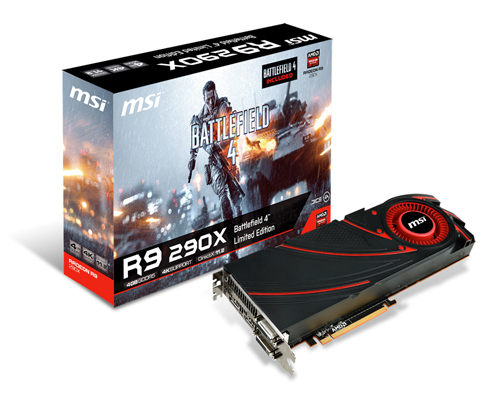 Click on a GPU to view more in-depth specifications and game FPS.
Click on a GPU to view more in-depth specifications and game FPS.
Found 325 GPUs.
Popularity
Graphics Card
Performance
GeForce RTX 3050
Release Date: Jan 4th, 2022
Performance Rating
$289.99 on Amazon
In Stock
Radeon RX 6600
Release Date: Oct 13th, 2021
Performance Rating
$249.99 on Amazon
In Stock
GeForce RTX 3060
Release Date: Jan 12th, 2021
Performance Rating
$399.99 on Amazon
In Stock
GeForce RTX 3060 Ti
Release Date: Dec 1st, 2020
Performance Rating
$369.99 on Amazon
In Stock
GeForce RTX 3070 Ti
Release Date: May 31st, 2021
Performance Rating
$679.99 on Amazon
In Stock
GeForce RTX 3080 Ti
Release Date: May 31st, 2021
Performance Rating
$899. 49 on Amazon
49 on Amazon
In Stock
Radeon RX 6700 XT
Release Date: Mar 3rd, 2021
Performance Rating
$419.99 on Amazon
In Stock
GeForce RTX 3070
Release Date: Sep 1st, 2020
Performance Rating
$519.99 on Amazon
In Stock
GeForce RTX 3080 12 GB
Release Date: Jan 11th, 2022
Performance Rating
$844.99 on Amazon
In Stock
Radeon RX 6500 XT
Release Date: Jan 19th, 2022
Performance Rating
$167.98 on Amazon
In Stock
GeForce RTX 2060
Release Date: Jan 7th, 2019
Performance Rating
$269.99 on Amazon
In Stock
GeForce RTX 2060 12 GB
Release Date: Dec 7th, 2021
Performance Rating
$251.99 on Amazon
In Stock
Radeon RX 6800 XT
Release Date: Oct 28th, 2020
Performance Rating
$579.99 on Amazon
In Stock
GeForce GTX 1660 SUPER
Release Date: Oct 29th, 2019
Performance Rating
$229.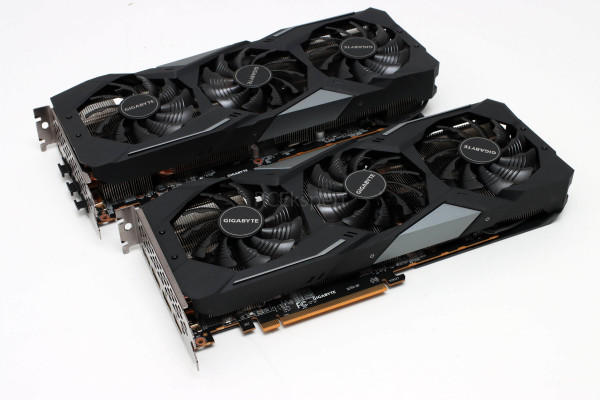 57 on Amazon
57 on Amazon
In Stock
GeForce GTX 1070
Release Date: Jun 10th, 2016
Performance Rating
$589 on Amazon
In Stock
Radeon RX 6600 XT
Release Date: Jul 30th, 2021
Performance Rating
$319.94 on Amazon
In Stock
GeForce GTX 1080 Ti
Release Date: Mar 10th, 2017
Performance Rating
GeForce RTX 3090 Ti
Release Date: Jan 27th, 2022
Performance Rating
$1,629.99 on Amazon
In Stock
GeForce RTX 3060 Mobile
Release Date: Jan 12th, 2021
Performance Rating
Radeon RX 6900 XT
Release Date: Oct 28th, 2020
Performance Rating
$769.99 on Amazon
In Stock
GeForce RTX 2060 SUPER
Release Date: Jul 9th, 2019
Performance Rating
$336.88 on Amazon
In Stock
GeForce RTX 3080
Release Date: Sep 1st, 2020
Performance Rating
$743. 59 on Amazon
59 on Amazon
In Stock
GeForce GTX 1080
Release Date: May 27th, 2016
Performance Rating
$1,560.99 on Amazon
In Stock
GeForce RTX 2070 SUPER
Release Date: Jul 9th, 2019
Performance Rating
$469 on Amazon
In Stock
Radeon RX 580
Release Date: Apr 18th, 2017
Performance Rating
$249 on Amazon
In Stock
- Previous
- 1
- 2
- 3
- 4
- …
- 11
- 12
- 13
- Next
AMD Radeon Pro 575 review: GPU specs, performance benchmarks
Buy on Amazon
Radeon Pro 575 videocard released by AMD; release date: 5 June 2017. The videocard is designed for workstation-computers and based on GCN 4.0 microarchitecture codenamed Polaris 20.
Core clock speed — 1096 MHz. Texture fill rate — 140.8 GTexel / s. Pipelines — 2048. Floating-point performance — 4,506 gflops. Manufacturing process technology — 14 nm. Transistors count — 5,700 million. Power consumption (TDP) — 120 Watt.
Manufacturing process technology — 14 nm. Transistors count — 5,700 million. Power consumption (TDP) — 120 Watt.
Memory type: GDDR5. Maximum RAM amount — 4 GB. Memory bus width — 256 Bit. Memory clock speed — 6800 MHz. Memory bandwidth — 217.6 GB / s.
Benchmarks
| Geekbench OpenCL |
|
|
||||
| CompuBench 1.5 Desktop Face Detection |
|
|
||||
| CompuBench 1.5 Desktop Ocean Surface Simulation |
|
|
||||
| CompuBench 1.5 Desktop T-Rex |
|
|
||||
CompuBench 1. 5 Desktop 5 DesktopVideo Composition |
|
|
||||
| CompuBench 1.5 Desktop Bitcoin Mining |
|
|
||||
| GFXBench 4.0 Car Chase Offscreen |
|
|
||||
GFXBench 4.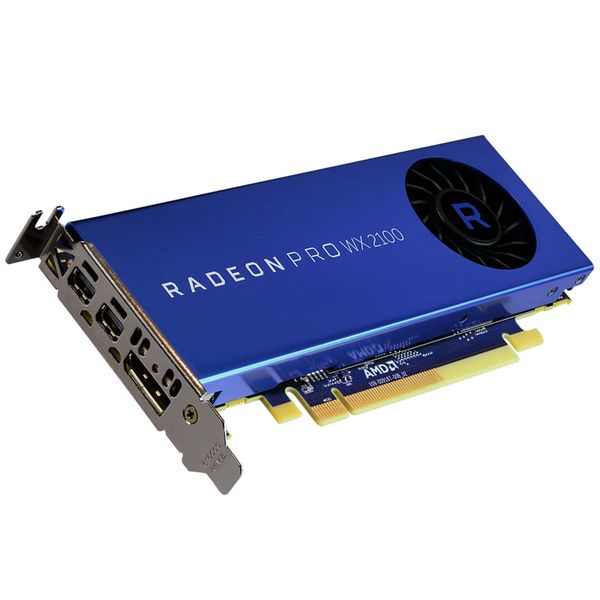 0 0Manhattan |
|
|
||||
| GFXBench 4.0 T-Rex |
|
|
||||
| GFXBench 4.0 Car Chase Offscreen |
|
|
||||
| GFXBench 4.0 Manhattan |
|
|
||||
| GFXBench 4.0 T-Rex |
|
|
| Name | Value |
|---|---|
| Geekbench — OpenCL | 35081 |
CompuBench 1.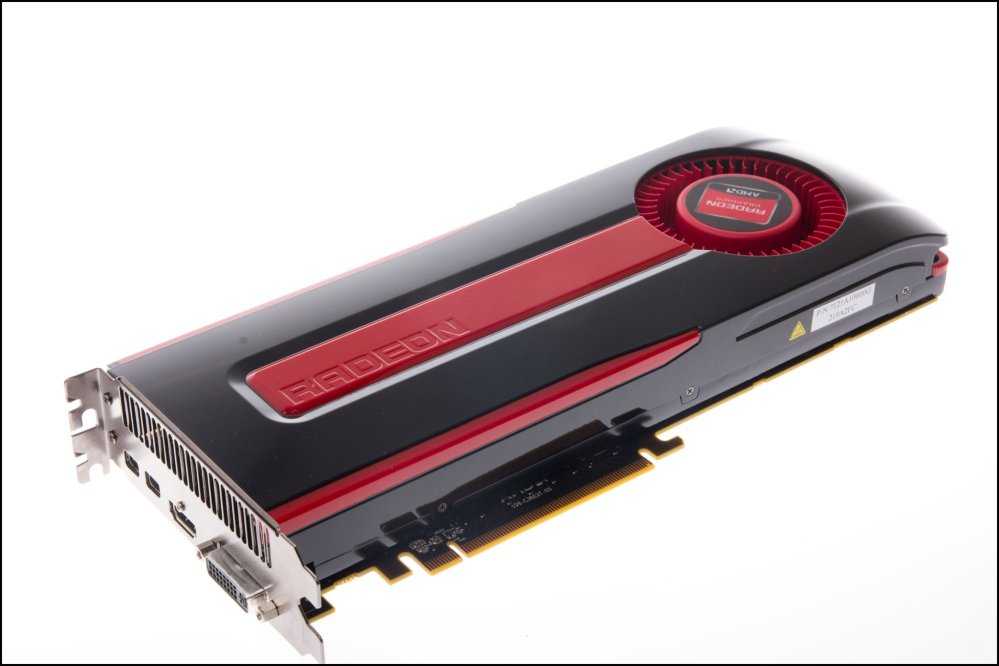 5 Desktop — Face Detection 5 Desktop — Face Detection |
86.154 mPixels/s |
| CompuBench 1.5 Desktop — Ocean Surface Simulation | 1090.128 Frames/s |
| CompuBench 1.5 Desktop — T-Rex | 7.880 Frames/s |
| CompuBench 1.5 Desktop — Video Composition | 98.349 Frames/s |
| CompuBench 1.5 Desktop — Bitcoin Mining | 539.686 mHash/s |
| GFXBench 4.0 — Car Chase Offscreen | 9613 Frames |
| GFXBench 4.0 — Manhattan | 2814 Frames |
| GFXBench 4.0 — T-Rex | 3352 Frames |
GFXBench 4.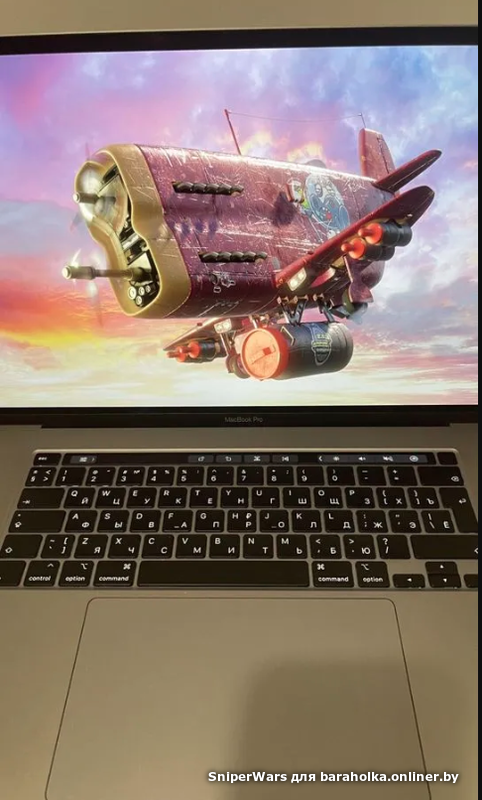 0 — Car Chase Offscreen 0 — Car Chase Offscreen |
9613.000 Fps |
| GFXBench 4.0 — Manhattan | 2814.000 Fps |
| GFXBench 4.0 — T-Rex | 3352.000 Fps |
Specifications (specs)
| Architecture | GCN 4.0 |
| Code name | Polaris 20 |
| Launch date | 5 June 2017 |
| Place in performance rating | 361 |
| Type | Workstation |
| Core clock speed | 1096 MHz |
| Floating-point performance | 4,506 gflops |
| Manufacturing process technology | 14 nm |
| Pipelines | 2048 |
| Texture fill rate | 140.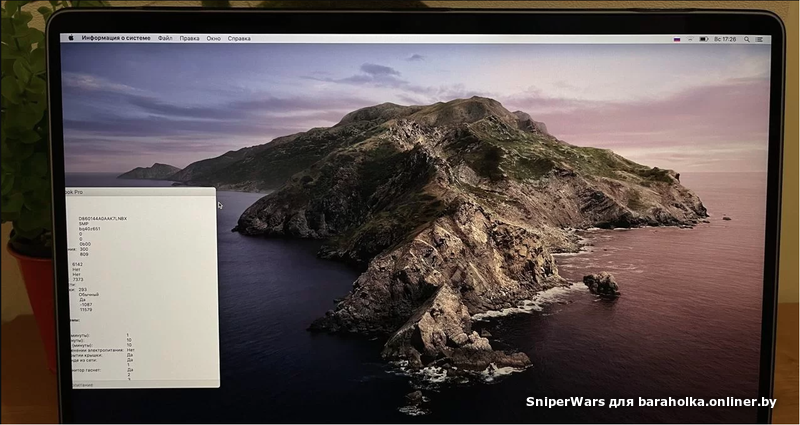 8 GTexel / s 8 GTexel / s |
| Thermal Design Power (TDP) | 120 Watt |
| Transistor count | 5,700 million |
|
|
|
| Display Connectors | No outputs |
| Interface | PCIe 3.0 x16 |
| Length | 241 mm |
| Supplementary power connectors | None |
| DirectX | 12.0 (12_0) |
| OpenGL | 4.5 |
| Maximum RAM amount | 4 GB |
| Memory bandwidth | 217. 6 GB / s 6 GB / s |
| Memory bus width | 256 Bit |
| Memory clock speed | 6800 MHz |
| Memory type | GDDR5 |
Navigation
Choose a GPU
Compare videocards
Compare AMD Radeon Pro 575 with others
AMD
Radeon Pro 575
vs
ATI
FireGL V3350
AMD
Radeon Pro 575
vs
NVIDIA
GeForce 9650M GS
AMD
Radeon Pro 575
vs
NVIDIA
Quadro FX 4700 X2
AMD
Radeon Pro 575
vs
NVIDIA
Quadro FX 370M
AMD
Radeon Pro 575
vs
AMD
Radeon HD 7950 Mac Edition
AMD
Radeon Pro 575
vs
AMD
Radeon R9 270
AMD Radeon Pro 575 vs AMD Radeon Pro 580
Comparative analysis of AMD Radeon Pro 575 and AMD Radeon Pro 580 videocards for all known characteristics in the following categories: Essentials, Technical info, Video outputs and ports, Compatibility, dimensions and requirements, API support, Memory.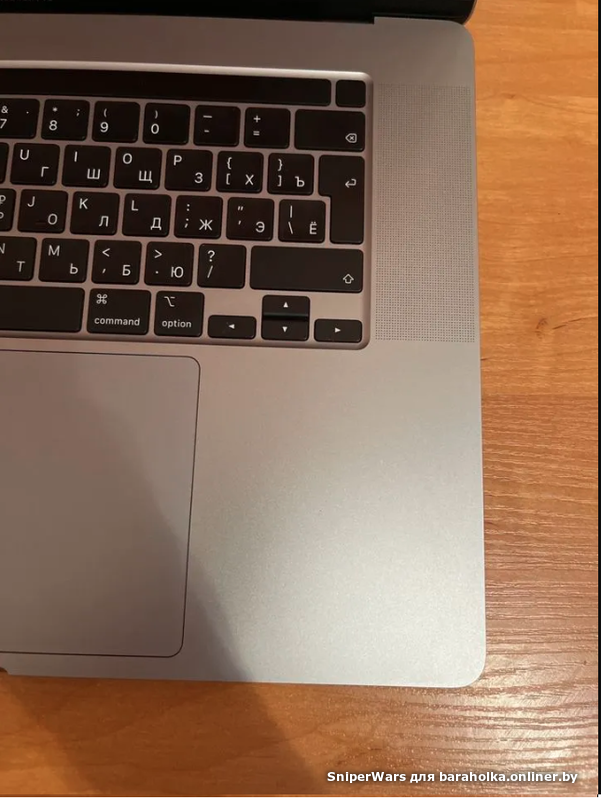
Benchmark videocards performance analysis: Geekbench — OpenCL, CompuBench 1.5 Desktop — Face Detection (mPixels/s), CompuBench 1.5 Desktop — Ocean Surface Simulation (Frames/s), CompuBench 1.5 Desktop — T-Rex (Frames/s), CompuBench 1.5 Desktop — Video Composition (Frames/s), CompuBench 1.5 Desktop — Bitcoin Mining (mHash/s), GFXBench 4.0 — Car Chase Offscreen (Frames), GFXBench 4.0 — Manhattan (Frames), GFXBench 4.0 — T-Rex (Frames), GFXBench 4.0 — Car Chase Offscreen (Fps), GFXBench 4.0 — Manhattan (Fps), GFXBench 4.0 — T-Rex (Fps), PassMark — G3D Mark, PassMark — G2D Mark.
AMD Radeon Pro 575
Buy on Amazon
vs
AMD Radeon Pro 580
Buy on Amazon
Differences
Reasons to consider the AMD Radeon Pro 575
- Around 25% lower typical power consumption: 120 Watt vs 150 Watt
- Around 5% better performance in CompuBench 1.
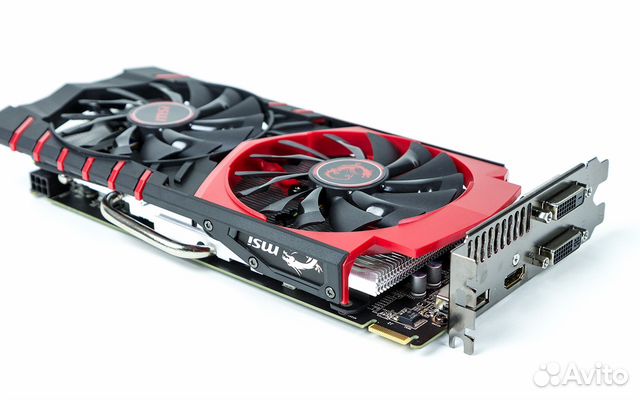 5 Desktop — Bitcoin Mining (mHash/s): 539.686 vs 511.984
5 Desktop — Bitcoin Mining (mHash/s): 539.686 vs 511.984
| Thermal Design Power (TDP) | 120 Watt vs 150 Watt |
| Memory clock speed | 6800 MHz vs 6780 MHz |
| CompuBench 1.5 Desktop — Bitcoin Mining (mHash/s) | 539.686 vs 511.984 |
Reasons to consider the AMD Radeon Pro 580
- Around 37% higher texture fill rate: 193.0 GTexel / s vs 140.8 GTexel / s
- Around 13% higher pipelines: 2304 vs 2048
- Around 37% better floating-point performance: 6,175 gflops vs 4,506 gflops
- 2x more maximum memory size: 8 GB vs 4 GB
- Around 5% better performance in Geekbench — OpenCL: 36932 vs 35081
- Around 27% better performance in CompuBench 1.5 Desktop — Face Detection (mPixels/s): 109.
 521 vs 86.154
521 vs 86.154 - Around 11% better performance in CompuBench 1.5 Desktop — Ocean Surface Simulation (Frames/s): 1206.829 vs 1090.128
- Around 25% better performance in CompuBench 1.5 Desktop — T-Rex (Frames/s): 9.88 vs 7.88
- Around 20% better performance in CompuBench 1.5 Desktop — Video Composition (Frames/s): 117.944 vs 98.349
- Around 5% better performance in GFXBench 4.0 — Car Chase Offscreen (Frames): 10113 vs 9613
- Around 3% better performance in GFXBench 4.0 — Manhattan (Frames): 2900 vs 2814
- Around 5% better performance in GFXBench 4.0 — Car Chase Offscreen (Fps): 10113 vs 9613
- Around 3% better performance in GFXBench 4.0 — Manhattan (Fps): 2900 vs 2814
| Core clock speed | 1100 MHz vs 1096 MHz |
| Texture fill rate | 193.0 GTexel / s vs 140.8 GTexel / s |
| Pipelines | 2304 vs 2048 |
| Floating-point performance | 6,175 gflops vs 4,506 gflops |
| Maximum memory size | 8 GB vs 4 GB |
| Geekbench — OpenCL | 36932 vs 35081 |
CompuBench 1. 5 Desktop — Face Detection (mPixels/s) 5 Desktop — Face Detection (mPixels/s) |
109.521 vs 86.154 |
| CompuBench 1.5 Desktop — Ocean Surface Simulation (Frames/s) | 1206.829 vs 1090.128 |
| CompuBench 1.5 Desktop — T-Rex (Frames/s) | 9.88 vs 7.88 |
| CompuBench 1.5 Desktop — Video Composition (Frames/s) | 117.944 vs 98.349 |
| GFXBench 4.0 — Car Chase Offscreen (Frames) | 10113 vs 9613 |
| GFXBench 4.0 — Manhattan (Frames) | 2900 vs 2814 |
| GFXBench 4.0 — T-Rex (Frames) | 3353 vs 3352 |
GFXBench 4. 0 — Car Chase Offscreen (Fps) 0 — Car Chase Offscreen (Fps) |
10113 vs 9613 |
| GFXBench 4.0 — Manhattan (Fps) | 2900 vs 2814 |
| GFXBench 4.0 — T-Rex (Fps) | 3353 vs 3352 |
Compare benchmarks
GPU 1: AMD Radeon Pro 575
GPU 2: AMD Radeon Pro 580
| Geekbench — OpenCL |
|
|
||||
| CompuBench 1.5 Desktop — Face Detection (mPixels/s) |
|
|
||||
| CompuBench 1.5 Desktop — Ocean Surface Simulation (Frames/s) |
|
|
||||
| CompuBench 1.5 Desktop — T-Rex (Frames/s) |
|
|
||||
CompuBench 1. 5 Desktop — Video Composition (Frames/s) 5 Desktop — Video Composition (Frames/s) |
|
|
||||
| CompuBench 1.5 Desktop — Bitcoin Mining (mHash/s) |
|
|
||||
| GFXBench 4.0 — Car Chase Offscreen (Frames) |
|
|
||||
| GFXBench 4. |
|
|
||||
| GFXBench 4.0 — T-Rex (Frames) |
|
|
||||
| GFXBench 4.0 — Car Chase Offscreen (Fps) |
|
|
||||
| GFXBench 4. |
|
|
||||
| GFXBench 4.0 — T-Rex (Fps) |
|
|
| Name | AMD Radeon Pro 575 | AMD Radeon Pro 580 |
|---|---|---|
| Geekbench — OpenCL | 35081 | 36932 |
| CompuBench 1. |
86.154 | 109.521 |
| CompuBench 1.5 Desktop — Ocean Surface Simulation (Frames/s) | 1090.128 | 1206.829 |
| CompuBench 1.5 Desktop — T-Rex (Frames/s) | 7.88 | 9.88 |
| CompuBench 1.5 Desktop — Video Composition (Frames/s) | 98.349 | 117.944 |
| CompuBench 1.5 Desktop — Bitcoin Mining (mHash/s) | 539.686 | 511.984 |
| GFXBench 4.0 — Car Chase Offscreen (Frames) | 9613 | 10113 |
GFXBench 4.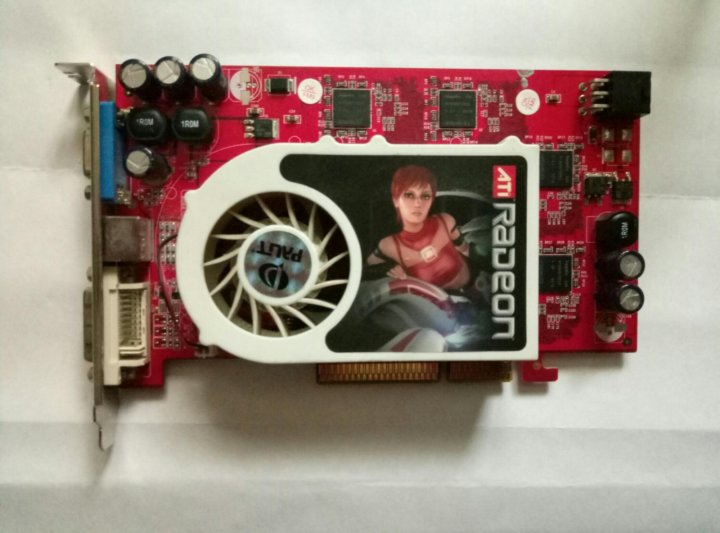 0 — Manhattan (Frames) 0 — Manhattan (Frames) |
2814 | 2900 |
| GFXBench 4.0 — T-Rex (Frames) | 3352 | 3353 |
| GFXBench 4.0 — Car Chase Offscreen (Fps) | 9613 | 10113 |
| GFXBench 4.0 — Manhattan (Fps) | 2814 | 2900 |
| GFXBench 4.0 — T-Rex (Fps) | 3352 | 3353 |
| PassMark — G3D Mark | 7753 | |
| PassMark — G2D Mark | 943 |
Compare specifications (specs)
| AMD Radeon Pro 575 | AMD Radeon Pro 580 | |
|---|---|---|
| Architecture | GCN 4. 0 0 |
GCN 4.0 |
| Code name | Polaris 20 | Polaris 20 |
| Launch date | 5 June 2017 | 5 June 2017 |
| Place in performance rating | 361 | 196 |
| Type | Workstation | Workstation |
| Core clock speed | 1096 MHz | 1100 MHz |
| Floating-point performance | 4,506 gflops | 6,175 gflops |
| Manufacturing process technology | 14 nm | 14 nm |
| Pipelines | 2048 | 2304 |
| Texture fill rate | 140.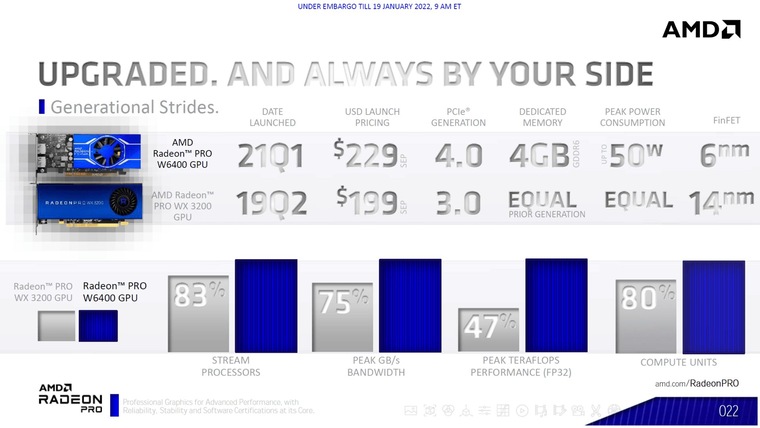 8 GTexel / s 8 GTexel / s |
193.0 GTexel / s |
| Thermal Design Power (TDP) | 120 Watt | 150 Watt |
| Transistor count | 5,700 million | 5,700 million |
| Boost clock speed | 1200 MHz | |
| Display Connectors | No outputs | No outputs |
| Interface | PCIe 3.0 x16 | PCIe 3.0 x16 |
| Length | 241 mm | 241 mm |
| Supplementary power connectors | None | None |
| DirectX | 12. 0 (12_0) 0 (12_0) |
12.0 (12_0) |
| OpenGL | 4.5 | 4.5 |
| Maximum RAM amount | 4 GB | 8 GB |
| Memory bandwidth | 217.6 GB / s | 256.0 GB / s |
| Memory bus width | 256 Bit | 256 Bit |
| Memory clock speed | 6800 MHz | 6780 MHz |
| Memory type | GDDR5 | GDDR5 |
AMD unveils seven new Radeon Pro workstation GPUs
Wednesday, June 7th, 2017 | Posted by Jim Thacker
AMD has unveiled seven new professional workstation graphics cards in its Radeon Pro line-up: the high-end Vega 64 and 56, and the five new cards of the Radeon Pro 500 Series: the 580, 575, 570, 560 and 555.
All of the cards were announced at WWDC 2017, Apple’s worldwide developer conference: the Radeon 500 series is shipping in Apple’s new iMacs, while the Vega cards will follow in the iMac Pro this December.
AMD’s new Vega GPU architecture: high data throughput and memory switching
At the top of the range, the Vega 64 and 56 will be based on AMD’s Vega architecture, which introduces its new NCU (Next-Generation Creation Unit) technology, and uses HBM2 memory in place of GDDR5.
The former – the next iteration of or successor to AMD’s GCN (Graphics Core Next) tech, depending on how you view it – improves processing of 8-bit and 16-bit data types, speeding up tasks for which full 32-bit floating-point precision is not needed: in which category, AMD includes ray tracing and video processing.
It also features a new programmable geometry pipeline with double the peak throughput per clock.
The latter trades high-clock-speed, lower-bandwidth memory for lower-clock-speed, high-bandwidth memory with the aim of improving performance when data sets are larger that can fit into local storage: for example, in DCC work, when a scene being rendered on the GPU is larger than the available graphics memory.
Unlike the original HBM used in AMD’s Radeon R9 gaming cards, HMB2 is not capped at 1GB per memory stack, raising the maximum total graphics memory per card from 4GB to a theoretical 32GB.
This increased capacity makes HBM2 a better fit for tasks involving large data sets, like GPU rendering.
The new Radeon Pro Vega 64 and 56: outperforming AMD’s current Windows GPUs
The Vega 64 and 56 are the first cards using the new Vega architecture to be pitched unambiguously at artists: the Vega Frontier Edition, unveiled in May, was marketed more towards data scientists.
AMD hasn’t posted details on its website yet, but according to Wccftech, the Vega 64 has pretty much the same specs as the Frontier Edition: 13 Tflops of single-precision compute performance and 16GB of HBM2.
The Vega 56 features a “cut-back” architecture with 56 compute units instead of 64, giving it a peak single-precision floating-point compute performance of 11 Tflops; and it comes with 8GB HBM2.
However, that still makes it more powerful than any of AMD’s current cards for Windows workstations: the high-end Radeon Pro WX 7100 has a peak performance of 5.7 Tflops and 8GB of GDDR5 memory.
The Radeon 500 series: similar but lower specs to the equivalent Windows cards
In contrast, the Radeon Pro 500 series use the same Polaris architecture as the Windows cards, which means GCN generation 4 instead of NCU, and GDDR5 memory instead of HBM2.
Their specs are also similar to the equivalent Windows cards, if slightly lower.
The top-of-the-range Radeon Pro 580 has a peak single-precision performance of 5.5 Tflops, compared to 5.7 Tflops for the Radeon Pro WX 7100, although both have 8GB of graphics memory.
The mid-range Radeon Pro 570 has a peak performance of 3.6 Tflops and 4GB of graphics memory, compared to 3.9 Tflops and 8GB for the Radeon Pro WX 5100.
The low-end Radeon Pro 560 has a peak performance of 1.9 Tflops and 4GB of graphics memory, compared to 2. 5 Tflops and 4GB for the Radeon Pro WX 4100.
5 Tflops and 4GB for the Radeon Pro WX 4100.
The other two new cards, the Radeon Pro 575 and 555, have intermediate specs: 4.5 Tflops and 4GB, and 1.3 Tflops and 2GB of graphics RAM – the latter of which seems a bit under-powered for modern DCC work.
All of the cards support OpenCL and Apple’s own Metal GPU computing API, which makes them compatible with most DCC applications that actually run on a Mac – although it does rule out several third-party renderers that use Nvidia’s CUDA API, including OctaneRender, Redshift and Mental Ray for Maya.
Pricing and availability
The Radeon 500 series cards are available now in Apple’s current-gen iMacs: the Radeon Pro 580, 575 and 570 in 27-inch models, and the 560 and 555 in 21.5-inch models.
The Radeon Vega 64 and 56 will ship with the iMac Pro in December 2017.
Read more about the new Radeon Pro 500 series GPUs on AMD’s website
Read more about the new Radeon Pro Vega architecture on AMD’s website
Tags: 16-bit precision, 32-bit floating point precision, 8-bit precision, AMD, Apple, compute performance, floating-point, GCN, GDDR5, GPU rendering, graphics memory, graphics pipeline, HBM2, High Bandwidth Memory, iMac, iMac Pro, memory, NCU, OpenCL, Polaris architecture, price, Radeon Pro, Radeon Pro 500 series, Radeon Pro 555, Radeon Pro 560, Radeon Pro 570, Radeon Pro 575, Radeon Pro 580, Radeon Pro Vega, Radeon Pro Vega 56, Radeon Pro Vega 64, Radeon Pro Vega Frontier Edition, ray tracing, single precision, specifications, speed, Vega architecture, video processing, VRAM, WWDC 2017
Review: Apple’s 2017 27″ 5K iMac impresses with truly powerful desktop-class graphics
AppleInsider is supported by its audience and may earn commission as an Amazon Associate and affiliate partner on qualifying purchases. These affiliate partnerships do not influence our editorial content.
These affiliate partnerships do not influence our editorial content.
Apple has radically overhauled its iMac lineup for 2017, giving its 27 inch Retina 5K models dedicated graphics driven by AMD Radeon Pro 570, 575, and 580 GPUs; a brighter display with enhanced P3 wide color; more powerful Intel Kaby Lake CPUs; upgradable RAM sockets and modern, ultrafast USB C and Thunderbolt 3 connectivity.
Apple first announced its Retina Display 5K iMac two and a half years ago, one year before introducing a smaller 21.5 inch 4K companion iMac at the end of 2015. Providing the power of a desktop with the stunning design of Apple’s light and thin MacBooks, the unibody all-in-one iMac line has become Apple’s most popular desktop Mac model.
The new 2017 iMacs sport the same exceptionally thin aluminum body tapering down to 5mm edges, connected to an aluminum foot with a precise hinge that provides the accurately fluid adjustability of a MacBook display. If you want to wall mount your iMac, you can order it with a VESA adapter.
If you want to wall mount your iMac, you can order it with a VESA adapter.
The fit and finish of iMacs remains extremely high; the body is rigid and strong and looks beautiful from all angles.
Externally, 2017’s latest 5K iMac is essentially unchanged from previous editions, apart from its two Thunderbolt ports shifting from TB2 (Mini DisplayPort jacks) to TB3 (using USB-C jacks). One minor change is the dual microphones at the top and back of the iMac being removed for a single mic that we couldn’t find. It’s said to be somewhere at the bottom of the machine, possibly in the vent. The mic is also no longer advertised as beamforming.
Thunderbolt 3 and Lightning, too
The 2017 iMacs’ move follows the port migration first made on the Retina MacBook (which uses USB C) and last fall’s redesigned MacBook Pro line (which introduced Thunderbolt 3, capable of driving multiple high resolution external displays and accessing external storage up to a blazing 40Gbps).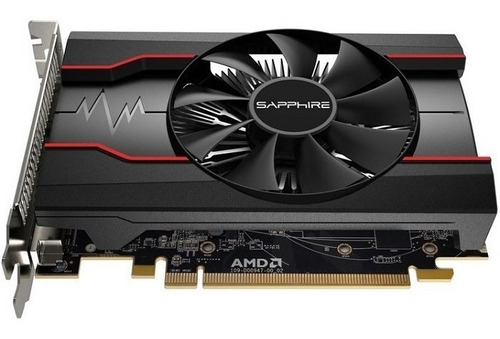
On the 5K iMac, the Thunderbolt 3 ports can drive a single external 5K (5120×2880) at 60Hz with support for 1 billion colors (10 bit color), or two external 4K UHD (3840×2160) displays at 60Hz with support for 1 billion colors; or two external 4K (4096×2304) displays at 60Hz with support for millions of colors (8 bit color).
The external monitor support works while also using the iMac’s built in 5K display with its support for 1 billion colors via 10-bit dithering. Apple has also enhanced the 5K iMac display, which now delivers brightness of 500 nits (43 percent brighter than before).
In addition to the two new Thunderbolt 3/USB C ports— which support both USB 3.1 Gen 2 devices (up to 10 Gpbs) and Thunderbolt 3 hardware (up to 40 Gbps)— Apple still provides four standard USB 3 ports, making it easy to plug in existing peripherals and iOS devices via Lightning cables without any adapters needed.
Apple even includes a Lightning cable in the box, provided to recharge the bundled, super-thin wedge of the wireless Magic Keyboard and the Magic Mouse 2— both of which have used Lightning to recharge their integrated batteries since their redesign in late 2015.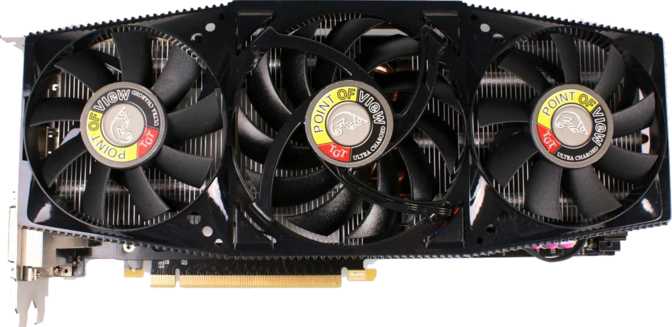
A faster Kaby Lake with new abilities
Inside, however, there’s even more that’s changed. The entry level 5K iMac now provides Intel’s 7th Generation Kaby Lake quad core Core i5 processor, which at 3.4GHz is notably more powerful than the 4th Generation Haswell Core i5 used in the original «Late 2014» 5K iMac, despite being clocked 100MHz slower, and an upgrade over the last Late 2015 5K refresh that used 6th Generation Skylake Core i5 CPUs clocked at 3.2 or 3.3GHz.
Among other things, Kaby Lake can hardware accelerate HEVC/H.265, the advanced new codec Apple will be using in macOS High Sierra and on new iOS 11 devices to slash the file size of 4K videos in half. The newest Core i5 chips use the same 6MB of L3 cache as previous models of the 5K iMac.
We tested the high-end model, which uses a 4.2 GHz Kaby Lake Core i7 which received a 200MHz rated base clock speed increase, jumping from Skylake to Intel’s next-generation Kaby Lake chips, and boosting clock increase from 4. 2GHz to 4.5GHz. That only tells part of the story, as under heavy quad core CPU usage the late 2015 iMac i7 wouldn’t boost at all, while the Kaby Lake i7 processor turbo boosts 200MHz above standard rated speed. This offers efficiency improvements due to an architecture upgrade, and also a 400MHz higher clock speed under load.
2GHz to 4.5GHz. That only tells part of the story, as under heavy quad core CPU usage the late 2015 iMac i7 wouldn’t boost at all, while the Kaby Lake i7 processor turbo boosts 200MHz above standard rated speed. This offers efficiency improvements due to an architecture upgrade, and also a 400MHz higher clock speed under load.
These improvements delivered a multicore Geekbench score of 19774 and single core score of 5736, scores which were 16 and 9 percent higher, respectively, than the previous high-end 5K model introduced last year (with scores of 16975 and 5263).
While a decent improvement, that’s not a jaw dropping benchmarking leap across a generation of Intel processors, underlining why Apple has increasingly focused on driving real world Mac performance through more efficient task scheduling and GPU crunched by the graphics processor rather than the CPU.
Also note that over the same year and a half, Apple’s custom designed A10 Fusion chip used in iPhone 7 delivered a CPU performance jump of 40 percent over last year’s A9 and was twice as fast as the A8 chip that debuted in iPhone 6 — alongside the 5K iMac in late 2015.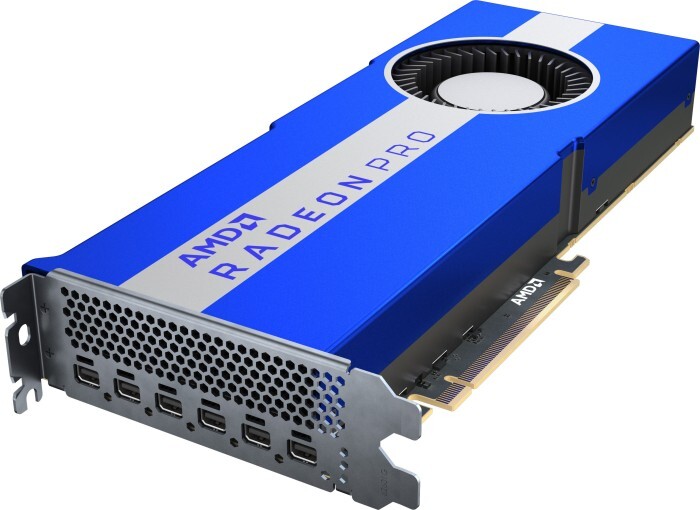
Along with this power increase comes added heat, and for some reason a slower fan. The single fan that cools off both the faster processor and much faster graphics now spins at 2700RPMs, 150RPM slower than before. Interestingly the fan’s noise is higher pitch and less annoying sounding than the previous fan, and slightly quieter with even with both fans at the same RPM.
Previous iMacs would thermal throttle under extended 100 percent CPU load, and this year’s machine is no exception. After about a 15 seconds of full load, the Kaby Lake iMac reached 99 celsius and slowed down from 4.4GHz to 4.3 and after a few more seconds was down to 4.2GHz. For the next 10 minutes of our test, it stayed at about 97 celsius and 4.2GHz, which is the rated clock speed. This is an improvement over the older model, which had to slow down to 3.8GHz to prevent from overheating. It’s still disappointing, knowing that Apple has the capability to put in two fans to keep this machine running cooler, like they are doing in the upcoming iMac Pro.
Thankfully, unless you transcode 4K video like we do, most programs including photo and video editing usually don’t max out your CPU. And if they do, it’s just for a split second. We edited multiple 4K videos for our YouTube channel and the computer never got hot enough to slow down, but it did get loud.
Faster AMD Radeon graphics
While the 4K iMac is just getting dedicated graphics, the entry level 5K model enhances its existing GPU, moving from an AMD Radeon R9 M380x with 2 GB of video memory to an AMD Radeon Pro 570 with 4GB video memory. The new 5K iMac also offers an enhanced tier option with a Radeon Pro 580 with 8GB of video memory, which was in the unit we tested.
This is the first time since 2010 that Apple offers desktop-class graphics chips inside of their iMac, and 7 years ago it was a low end card that was available. Thanks to the 14nm design of the Polaris graphics chips, the power draw is much lower than the last generation 28-nanometer AMD graphics allowing the use of desktop GPUs.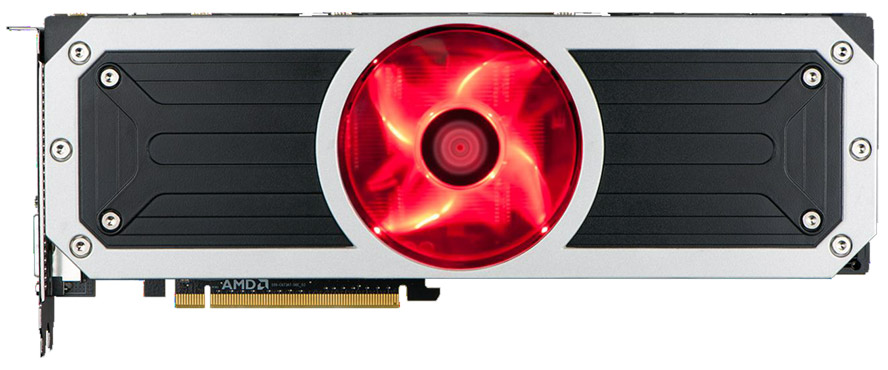 The Base Radeon Pro 570 is actually faster than the best graphics card available in 2015.
The Base Radeon Pro 570 is actually faster than the best graphics card available in 2015.
Many people complained about stuttery user interface with the previous base graphics, and that was likely because of the measly 2GB of video RAM, which is taken up by the roughly 15 million pixels of the 5K display leaving almost nothing for programs to use. Anyone that was serious about video editing or other productivity or creative software had to spend extra to get that 4GB graphics card, where they no longer do. Of course we do recommend upgrading to the best graphics for those tasks, but it’s no longer a requirement.
The new star of the show is the 8-gigabyte Radeon Pro 580 which was 75 percent faster in the Final Cut X benchmark BruceX completing the render in just 15.5 seconds, compared to 27 seconds with last years model. In our real-world video editing tests with Final Cut Pro, our Kaby lake all in one was between 21 percent and 80 percent faster depending on the task (with more difficult tasks getting a bigger performance improvement), which does make a noticeable difference in day to day work.
Apple historically hasn’t been known to be a good option for gaming, but with these new desktop grade graphics chips, we decided to put our 5K iMac to the test playing Battlefield 1. The Radeon Pro 580 is based off of the RX 580 which is known to be a respectable gaming card, and it doesn’t disappoint here. Since Apple choose 5K because of its perfecting scaling of double 2560×1440 resolution, gaming at 1440P looked great with no weird image issues that you often get when running at a lower resolution than intended for the display. Setting all the graphics settings set to the absolute maximum (ultra preset), Battlefield 1 ran between 50 to 70 frames per second, with the vast majority of the time staying above 60 frames, which is perfect for this display.
This great performance along with with the quality of the image really surprised us, and even though the fans did kick up to a high settings after about an hour, there was still enough cooling headroom so extended gameplay shouldn’t present any issues.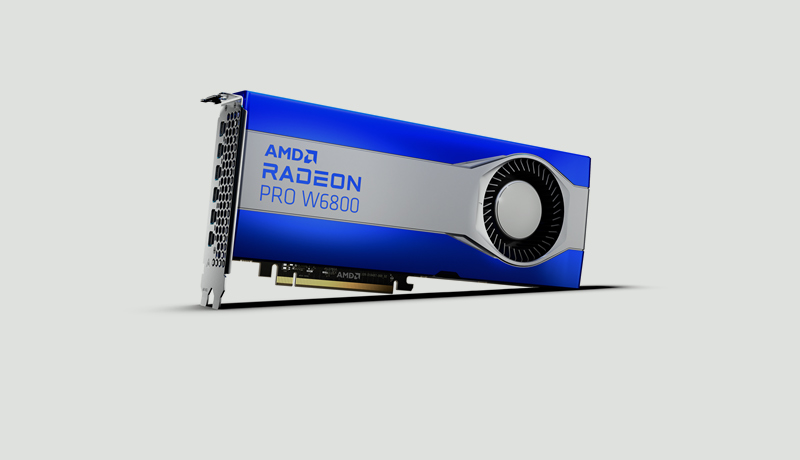 As previously, a dedicated gaming PC is still a better value than an iMac, but for the many like myself who want to use this machine for productivity but wouldn’t mind spending a bit of time relaxing after work, you won’t have any issues. This is really the first time that we can say you can happily game on Apple’s most popular desktop and have a high-quality and smooth experience.
As previously, a dedicated gaming PC is still a better value than an iMac, but for the many like myself who want to use this machine for productivity but wouldn’t mind spending a bit of time relaxing after work, you won’t have any issues. This is really the first time that we can say you can happily game on Apple’s most popular desktop and have a high-quality and smooth experience.
4K and 5K iMacs retain the same solid lines with revamped internals
A «best configuration» 5K iMac with a Core i7, 32GB RAM and the best graphics option would have cost $3,399 in the previous generation, but is now priced $100 less despite the 2017 model providing faster graphics, a Kaby Lake CPU, faster RAM, double the entry-level SSD capacity and Thunderbolt 3.
Across the line, GPU options have been updated so now the base 4GB GPU is faster then the previous best GPU option. Thus, a new, «better tier» 2017 5K iMac priced at $2,399 will outperform the previous generation 5K iMac that cost $2,799.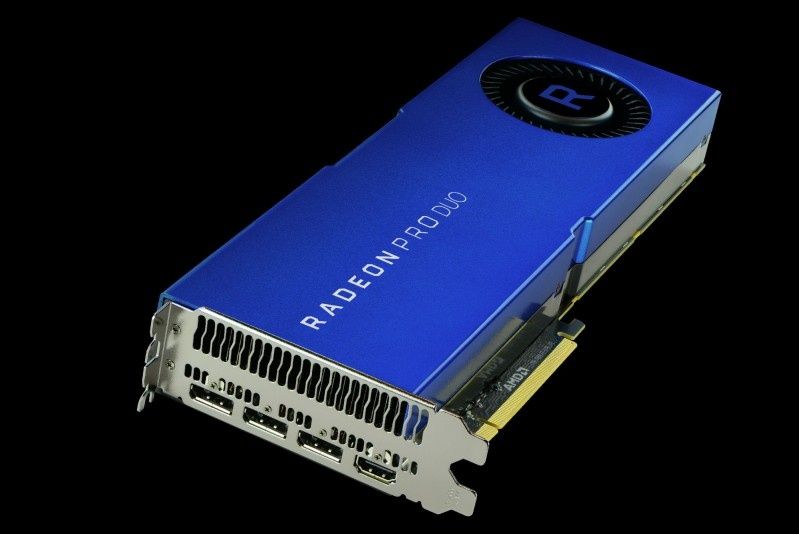 The «best tier,» high performance tier outperforms the Late 2015 5K iMac at a price that’s $400 less expensive.
The «best tier,» high performance tier outperforms the Late 2015 5K iMac at a price that’s $400 less expensive.
That means you can splurge on the high end to double your SSD storage and video memory to significantly improve graphics performance and still come in $100 less than the previous 5K iMac, featuring the best graphics and processor options.
Apple is aiming its new iMacs toward 3D and 360 degree VR development
While faster overall in many ways, the new 4K and 5K iMacs are designed with the particular objective of being useful for advanced graphics development. Apple recommends its 5K iMac with Radeon Pro 580 graphics for 3D VR content creation and immersive 360 degree video editing— a feature it is adding to Final Cut Pro X later this year, apparently based on the hiring of 360VR Toolbox developer Tim Dashwood.
Along with more powerful dedicated GPUs of their own, their two USB-C connectors supporting Thunderbolt 3 will enable external graphics cards under macOS High Sierra (Thunderbolt 3 is essentially an external PCIe data expansion slot over a cable).:no_upscale()/cdn.vox-cdn.com/uploads/chorus_asset/file/6845557/Radeon-Pro-WX-4100.0.jpg)
Last week at WWDC, Apple showed off the new Mac’s VR capabilities by inviting Industrial Light and Magic to the stage to demonstrate laying out a Star Wars themed VR 3D scene using Epic’s Unreal Engine, and rendering it on an iMac at a smooth 90 frames per second.
Being fast for VR also means the new iMacs work well for existing advanced media workflows ranging from Final Cut Pro X editing to Logic X production, as well as for consumer apps like Photos, GarageBand and iMovie.
Faster, upgradable RAM architecture and storage options
All three 5K iMac options also now use a faster RAM architecture: 2400MHz PC4-19200 DDR4 (compared to 1867MHz PC3-14900 DDR3L in the previous generation).
The new 5K models support upgrading from the standard 8 gigabytes to 64 gigabytes. Their RAM is socketed, and unlike the 21.5-inch models, the 27-inch iMacs provide easy user access to memory upgrades, and supply four RAM slots rather than only two.
5K iMac 1TB Fusion Drive is much faster than a hard drive, but not SSD-fast
The new iMacs also now support Bluetooth 4.2, which Apple began incorporating on its iOS devices in 2015, starting with iPhone 6 and iPad Air 2, and continue to supply a Gigabit Ethernet port and a SDXC slot for digital photographers.
5K iMac 1TB Fusion Drive is much faster than a hard drive, but not SSD-fast
The more expensive 2017 5K iMac tier provides Apple’s faster SDD-accelerated 2-terabyte Fusion Drive— along with all the other improvements detailed above (including the better Radeon Pro 580 GPU and a bit faster 3.8GHz Core i5)— is now priced at $2,299. All three 5K iMac tiers are essentially at the same prices as the previous 5K iMac models they replace.
Upgrade options
While much faster than a conventional hard drive, Apple’s Fusion Drive (a hybrid 1-terabyte hard drive with 32 gigabytes of SSD cache) might not be fast enough for doing higher end workloads.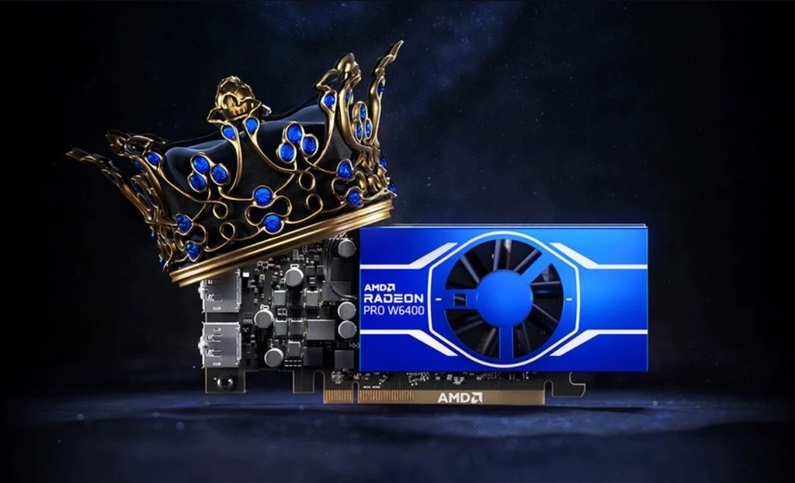 Upgrading the base model 5K iMac to a full SSD costs $100 for 256 gigabytes, $300 for 512 gigabytes and $700 for a 1-terabyte SSD. Thunderbolt 3 connectivity also enables pro users to attach external SSD or RAID storage for working with video.
Upgrading the base model 5K iMac to a full SSD costs $100 for 256 gigabytes, $300 for 512 gigabytes and $700 for a 1-terabyte SSD. Thunderbolt 3 connectivity also enables pro users to attach external SSD or RAID storage for working with video.
Another built-in alternative that’s less expensive— and offers far more capacity than is affordable via pure SSD— is going with a larger Fusion Drive. Apple’s 2-terabyte and 3-terabyte Fusion Drives incorporate 128 gigabytes of SSD cache, as $200 and $300 options, respectively, although they are only offered on the better and best model tiers. Apple actually recommends that an iMac with 32 gigabytes or more RAM «should be configured with a 2-terabyte or larger Fusion Drive or all-SSD storage.»
The highest tier 5K iMac can be upgraded to a 4.2GHz Core i7 upgrade option for $200, while a RAM upgrade to 16GB costs $200, moving to 32 gigabytes will set you back $600, and 64 gigabytes of RAM costs $1400— although less expensive upgrades and DIY kits are available from third parties.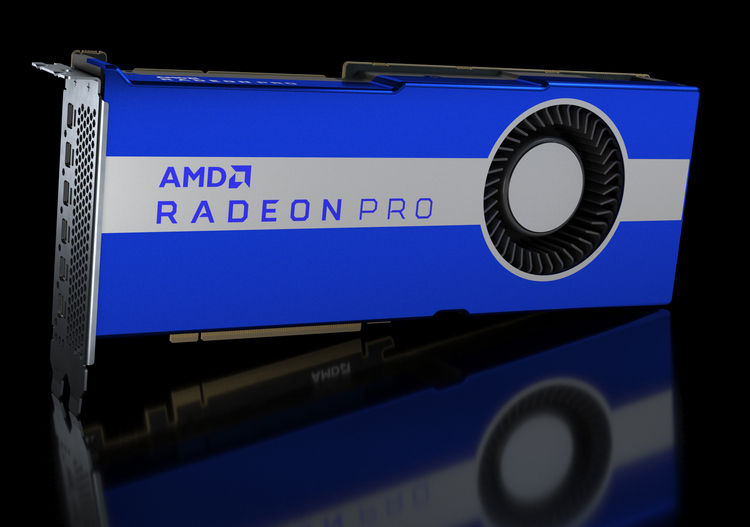
Apple’s $1,799 entry level 5K iMac supplies a 1-terabyte Fusion Drive. Upgrading it to a 2-terabyte Fusion Drive costs $200, the same price as the middle tier — which supplies a slightly faster CPU and GPU in that price. The $1,999 model also offers other upgrade paths, including a 4.2GHz Core i7 upgrade option for $300 and a 64GB RAM upgrade (still $1,400) and both a 2TB and 3TB Fusion Drive (for $200 and $300, respectively).
All models can be ordered with Apple’s Magic Trackpad 2 instead of the standard Magic Mouse 2 for $50 more, or you can get both pointing devices for an additional $129. Also new this summer is Apple’s wireless Magic Keyboard with Numeric Keypad, sold separately for $129.
You can now get a wireless Magic Keyboard with Numeric Keypad
Other 2017 iMac options
Alongside its Retina 5K iMacs, Apple also offers a refreshed, non-Retina (1920×1080) 21.5-inch iMac with a 2.3GHz dual core Kaby Lake CPU and Intel Iris Plus graphics, a faster LPDDR4 RAM architecture and Thunderbolt 3, with a standard 1TB hard drive for $1099.
Apple also upgraded its 21.5 inch 4K (4096×2304) iMac with Kaby Lake CPUs ranging from a 3.0GHz Core i5 7400 to a 3.4GHz Core i5 7500; GPU options of the Radeon Pro 555 with 2 gigabytes or Radeon Pro 560 with 4 gigabytes; and RAM upgrade potential to 32 gigabytes using just two slots (that are not user accessible). The 4K model tiers range from $1099 to $1499.
Conclusion
The latest Kaby Lake iMacs deliver strong refinements to Apple’s most popular desktop Mac line. Later this year, Apple will introduce at even higher end iMac Pro that goes even further, albeit at a premium price, starting at $5,000.
The 5K Mac models deliver performance improvements at a better price than previous models, although we recommend users opt for at least the middle tier (or upgrade their Fusion Drive to the more SSD-rich 2TB or larger options).
iMacs naturally deliver greater performance than a more mobile notebook, but also only have a single pair of Thunderbolt 3 connectors, so users who want to drive dual 5K displays will either have to opt for a 15 inch MacBook Pro or wait for the iMac Pro this December.
The SD card on the new iMacs also only supports UHS-1 speeds. Most new cameras support UHS-2 SDXC cards, so professional and enthusiast photographers have another reason to consider waiting for the iMac Pro.
However, for mainstream graphics, video and office users who play video games — and others living in the iMac sweet spot — the Kaby Lake generation of iMacs offers a great lineup for new buyers to jump in or a strong upgrade for users looking for faster, sustained performance in a great looking package with a breathtaking display and strong connectivity features.
Score: 4.5 out of 5
Where to buy
Adorama is exclusively offering AppleInsider readers an additional $75 off each and every Mid 2017 27-inch iMac 5K configuration with promo code APINSIDER (this is on top of Adorama’s already reduced pricing). What’s more, shipping is free on the new iMacs, and Adorama will not collect sales tax on orders shipped outside NY and NJ. For shoppers outside those two states, that can mean $235 to $515 in savings compared to paying full price with tax at the Apple Store. And according to our 27-inch iMac 5K Price Guide, these are the lowest prices available from an Apple authorized reseller. To redeem the coupon, please see the step-by-step instructions below.
For shoppers outside those two states, that can mean $235 to $515 in savings compared to paying full price with tax at the Apple Store. And according to our 27-inch iMac 5K Price Guide, these are the lowest prices available from an Apple authorized reseller. To redeem the coupon, please see the step-by-step instructions below.
Mid 2017 27″ iMac 5Ks
27″ (3.4GHz 8GB 1TB FUS Radeon 570) for $1,704.00 * ($95 off + no tax outside NY & NJ)
27″ (3.4GHz 8GB 2TB FUS Radeon 570) for $1,904.00 * ($95 off + no tax outside NY & NJ)
27″ (3.4GHz 8GB 256GB SSD Radeon 570) for $1,804.00 * ($95 off + no tax outside NY & NJ)
27″ (3.4GHz 8GB 512GB SSD Radeon 570) for $2,004.00 * ($95 off + no tax outside NY & NJ)
27″ (3.4GHz 8GB 1TB SSD Radeon 570) for $2,404.00 * ($95 off + no tax outside NY & NJ)
27″ (3.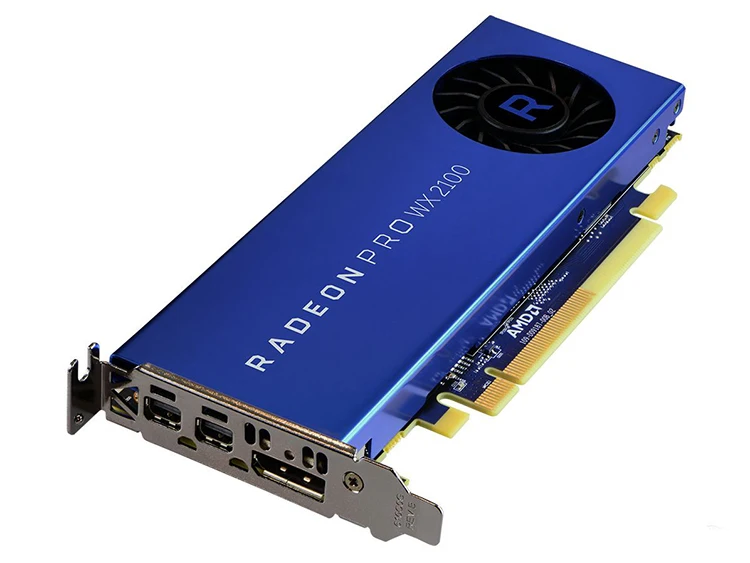 4GHz 16GB 1TB FUS Radeon 570) for $1,904.00 * ($95 off + no tax outside NY & NJ)
4GHz 16GB 1TB FUS Radeon 570) for $1,904.00 * ($95 off + no tax outside NY & NJ)
27″ (3.4GHz 16GB 2TB FUS Radeon 570) for $2,104.00 * ($95 off + no tax outside NY & NJ)
27″ (3.4GHz 16GB 256GB SSD Radeon 570) for $2,004.00 * ($95 off + no tax outside NY & NJ)
27″ (3.4GHz 16GB 512GB SSD Radeon 570) for $2,204.00 * ($95 off + no tax outside NY & NJ)
27″ (3.4GHz 16GB 1TB SSD Radeon 570) for $2,604.00 * ($95 off + no tax outside NY & NJ)
27″ (3.4GHz 32GB 1TB FUS Radeon 570) for $2,304.00 * ($95 off + no tax outside NY & NJ)
27″ (3.4GHz 32GB 2TB FUS Radeon 570) for $2,504.00 * ($95 off + no tax outside NY & NJ)
27″ (3.4GHz 32GB 256GB SSD Radeon 570) for $2,404.00 * ($95 off + no tax outside NY & NJ)
27″ (3.4GHz 32GB 512GB SSD Radeon 570) for $2,604.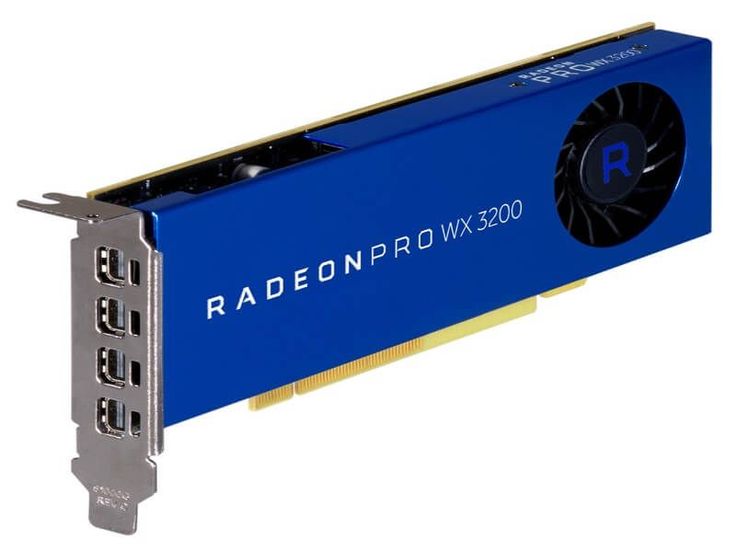 00 * ($95 off + no tax outside NY & NJ)
00 * ($95 off + no tax outside NY & NJ)
27″ (3.4GHz 32GB 1TB SSD Radeon 570) for $3,004.00 * ($95 off + no tax outside NY & NJ)
27″ (3.5GHz 8GB 1TB FUS Radeon 575) for $1,904.00 * ($95 off + no tax outside NY & NJ)
27″ (3.5GHz 8GB 2TB FUS Radeon 575) for $2,104.00 * ($95 off + no tax outside NY & NJ)
27″ (3.5GHz 8GB 3TB FUS Radeon 575) for $2,204.00 * ($95 off + no tax outside NY & NJ)
27″ (3.5GHz 8GB 256GB SSD Radeon 575) for $2,004.00 * ($95 off + no tax outside NY & NJ)
27″ (3.5GHz 8GB 512GB SSD Radeon 575) for $2,204.00 * ($95 off + no tax outside NY & NJ)
27″ (3.5GHz 8GB 1TB SSD Radeon 575) for $2,604.00 * ($95 off + no tax outside NY & NJ)
27″ (3.5GHz 16GB 1TB FUS Radeon 575) for $2,104.00 * ($95 off + no tax outside NY & NJ)
27″ (3. 5GHz 16GB 2TB FUS Radeon 575) for $2,304.00 * ($95 off + no tax outside NY & NJ)
5GHz 16GB 2TB FUS Radeon 575) for $2,304.00 * ($95 off + no tax outside NY & NJ)
27″ (3.5GHz 16GB 3TB FUS Radeon 575) for $2,404.00 * ($95 off + no tax outside NY & NJ)
27″ (3.5GHz 16GB 256GB SSD Radeon 575) for $2,204.00 * ($95 off + no tax outside NY & NJ)
27″ (3.5GHz 16GB 512GB SSD Radeon 575) for $2,404.00 * ($95 off + no tax outside NY & NJ)
27″ (3.5GHz 16GB 1TB SSD Radeon 575) for $2,804.00 * ($95 off + no tax outside NY & NJ)
27″ (3.5GHz 32GB 1TB FUS Radeon 575) for $2,504.00 * ($95 off + no tax outside NY & NJ)
27″ (3.5GHz 32GB 2TB FUS Radeon 575) for $2,704.00 * ($95 off + no tax outside NY & NJ)
27″ (3.5GHz 32GB 3TB FUS Radeon 575) for $2,804.00 * ($95 off + no tax outside NY & NJ)
27″ (3.5GHz 32GB 256GB SSD Radeon 575) for $2,604. 00 * ($95 off + no tax outside NY & NJ)
00 * ($95 off + no tax outside NY & NJ)
27″ (3.5GHz 32GB 512GB SSD Radeon 575) for $2,804.00 * ($95 off + no tax outside NY & NJ)
27″ (3.5GHz 32GB 1TB SSD Radeon 575) for $3,204.00 * ($95 off + no tax outside NY & NJ)
27″ (3.5GHz 64GB 1TB FUS Radeon 575) for $3,304.00 * ($95 off + no tax outside NY & NJ)
27″ (3.5GHz 64GB 2TB FUS Radeon 575) for $3,504.00 * ($95 off + no tax outside NY & NJ)
27″ (3.5GHz 64GB 3TB FUS Radeon 575) for $3,604.00 * ($95 off + no tax outside NY & NJ)
27″ (3.5GHz 64GB 256GB SSD Radeon 575) for $3,404.00 * ($95 off + no tax outside NY & NJ)
27″ (3.5GHz 64GB 512GB SSD Radeon 575) for $3,604.00 * ($95 off + no tax outside NY & NJ)
27″ (3.5GHz 64GB 1TB SSD Radeon 575) for $4,404.00 * ($95 off + no tax outside NY & NJ)
27″ (4. 2GHz 8GB 1TB FUS Radeon 575) for $2,204.00 * ($95 off + no tax outside NY & NJ)
2GHz 8GB 1TB FUS Radeon 575) for $2,204.00 * ($95 off + no tax outside NY & NJ)
27″ (4.2GHz 8GB 2TB FUS Radeon 575) for $2,404.00 * ($95 off + no tax outside NY & NJ)
27″ (4.2GHz 8GB 3TB FUS Radeon 575) for $2,504.00 * ($95 off + no tax outside NY & NJ)
27″ (4.2GHz 8GB 256GB SSD Radeon 575) for $2,304.00 * ($95 off + no tax outside NY & NJ)
27″ (4.2GHz 8GB 512GB SSD Radeon 575) for $2,504.00 * ($95 off + no tax outside NY & NJ)
27″ (4.2GHz 8GB 1TB SSD Radeon 575) for $2,904.00 * ($95 off + no tax outside NY & NJ)
27″ (4.2GHz 16GB 1TB FUS Radeon 575) for $2,404.00 * ($95 off + no tax outside NY & NJ)
27″ (4.2GHz 16GB 2TB FUS Radeon 575) for $2,604.00 * ($95 off + no tax outside NY & NJ)
27″ (4.2GHz 16GB 3TB FUS Radeon 575) for $2,704.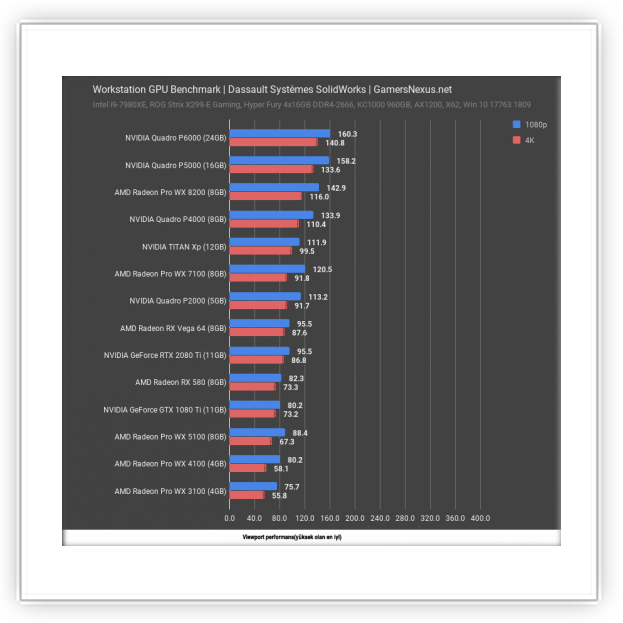 00 * ($95 off + no tax outside NY & NJ)
00 * ($95 off + no tax outside NY & NJ)
27″ (4.2GHz 16GB 256GB SSD Radeon 575) for $2,504.00 * ($95 off + no tax outside NY & NJ)
27″ (4.2GHz 16GB 512GB SSD Radeon 575) for $2,704.00 * ($95 off + no tax outside NY & NJ)
27″ (4.2GHz 16GB 1TB SSD Radeon 575) for $3,104.00 * ($95 off + no tax outside NY & NJ)
27″ (4.2GHz 32GB 1TB FUS Radeon 575) for $2,804.00 * ($95 off + no tax outside NY & NJ)
27″ (4.2GHz 32GB 2TB FUS Radeon 575) for $3,004.00 * ($95 off + no tax outside NY & NJ)
27″ (4.2GHz 32GB 3TB FUS Radeon 575) for $3,104.00 * ($95 off + no tax outside NY & NJ)
27″ (4.2GHz 32GB 256GB SSD Radeon 575) for $2,904.00 * ($95 off + no tax outside NY & NJ)
27″ (4.2GHz 32GB 512GB SSD Radeon 575) for $3,104.00 * ($95 off + no tax outside NY & NJ)
27″ (4.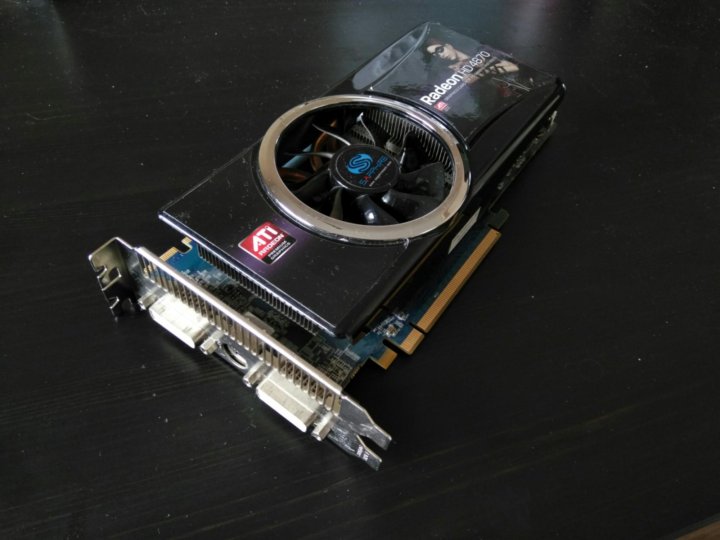 2GHz 32GB 1TB SSD Radeon 575) for $3,504.00 * ($95 off + no tax outside NY & NJ)
2GHz 32GB 1TB SSD Radeon 575) for $3,504.00 * ($95 off + no tax outside NY & NJ)
27″ (4.2GHz 64GB 1TB FUS Radeon 575) for $3,604.00 * ($95 off + no tax outside NY & NJ)
27″ (4.2GHz 64GB 2TB FUS Radeon 575) for $3,804.00 * ($95 off + no tax outside NY & NJ)
27″ (4.2GHz 64GB 3TB FUS Radeon 575) for $3,804.00 * ($95 off + no tax outside NY & NJ)
27″ (4.2GHz 64GB 256GB SSD Radeon 575) for $3,704.00 * ($95 off + no tax outside NY & NJ)
27″ (4.2GHz 64GB 512GB SSD Radeon 575) for $3,904.00 * ($95 off + no tax outside NY & NJ)
27″ (4.2GHz 64GB 1TB SSD Radeon 575) for $4,304.00 * ($95 off + no tax outside NY & NJ)
27″ (3.8GHz 8GB 2TB FUS Radeon 580) for $2,204.00 * ($95 off + no tax outside NY & NJ)
27″ (3.8GHz 8GB 3TB FUS Radeon 580) for $2,304. 00 * ($95 off + no tax outside NY & NJ)
00 * ($95 off + no tax outside NY & NJ)
27″ (3.8GHz 8GB 512GB SSD Radeon 580) for $2,404.00 * ($95 off + no tax outside NY & NJ)
27″ (3.8GHz 8GB 1TB SSD Radeon 580) for $2,804.00 * ($95 off + no tax outside NY & NJ)
27″ (3.8GHz 8GB 2TB SSD Radeon 580) for $3,604.00 * ($95 off + no tax outside NY & NJ)
27″ (3.8GHz 16GB 2TB FUS Radeon 580) for $2,404.00 * ($95 off + no tax outside NY & NJ)
27″ (3.8GHz 16GB 3TB FUS Radeon 580) for $2,504.00 * ($95 off + no tax outside NY & NJ)
27″ (3.8GHz 16GB 512GB SSD Radeon 580) for $2,604.00 * ($95 off + no tax outside NY & NJ)
27″ (3.8GHz 16GB 1TB SSD Radeon 580) for $3,004.00 * ($95 off + no tax outside NY & NJ)
27″ (3.8GHz 16GB 2TB SSD Radeon 580) for $3,804.00 * ($95 off + no tax outside NY & NJ)
27″ (3. 8GHz 32GB 2TB FUS Radeon 580) for $2,804.00 * ($95 off + no tax outside NY & NJ)
8GHz 32GB 2TB FUS Radeon 580) for $2,804.00 * ($95 off + no tax outside NY & NJ)
27″ (3.8GHz 32GB 3TB FUS Radeon 580) for $2,904.00 * ($95 off + no tax outside NY & NJ)
27″ (3.8GHz 32GB 512GB SSD Radeon 580) for $3,004.00 * ($95 off + no tax outside NY & NJ)
27″ (3.8GHz 32GB 1TB SSD Radeon 580) for $3,404.00 * ($95 off + no tax outside NY & NJ)
27″ (3.8GHz 32GB 2TB SSD Radeon 580) for $4,204.00 * ($95 off + no tax outside NY & NJ)
27″ (3.8GHz 64GB 2TB FUS Radeon 580) for $3,604.00 * ($95 off + no tax outside NY & NJ)
27″ (3.8GHz 64GB 3TB FUS Radeon 580) for $3,704.00 * ($95 off + no tax outside NY & NJ)
27″ (3.8GHz 64GB 512GB SSD Radeon 580) for $3,804.00 * ($95 off + no tax outside NY & NJ)
27″ (3.8GHz 64GB 1TB SSD Radeon 580) for $4,204.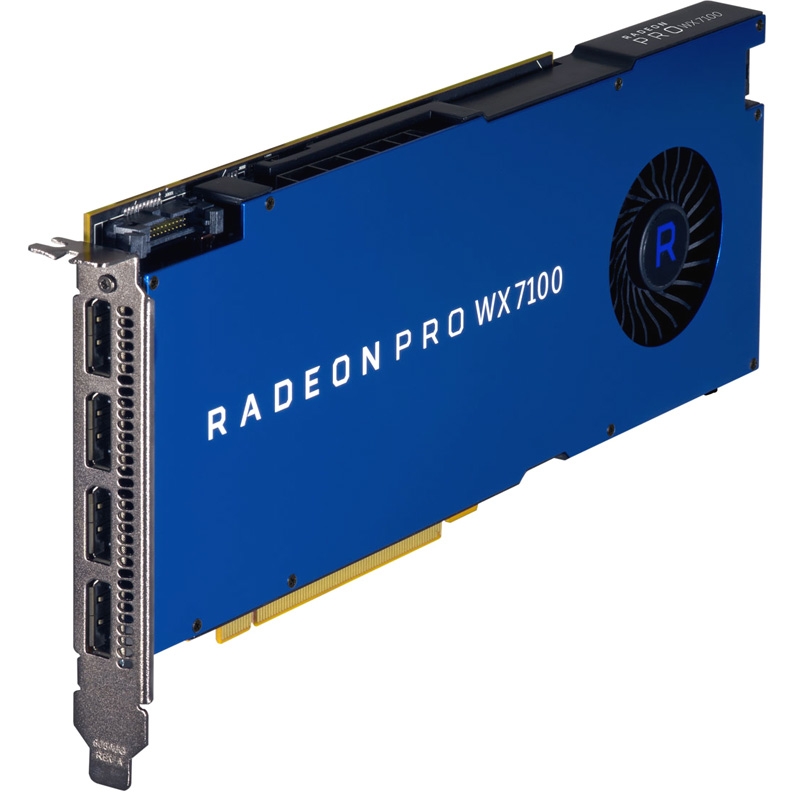 00 * ($95 off + no tax outside NY & NJ)
00 * ($95 off + no tax outside NY & NJ)
27″ (3.8GHz 64GB 2TB SSD Radeon 580) for $5,004.00 * ($95 off + no tax outside NY & NJ)
27″ (4.2GHz 8GB 2TB FUS Radeon 580) for $2,404.00 * ($95 off + no tax outside NY & NJ)
27″ (4.2GHz 8GB 3TB FUS Radeon 580) for $2,504.00 * ($95 off + no tax outside NY & NJ)
27″ (4.2GHz 8GB 512GB SSD Radeon 580) for $2,604.00 * ($95 off + no tax outside NY & NJ)
27″ (4.2GHz 8GB 1TB SSD Radeon 580) for $3,004.00 * ($95 off + no tax outside NY & NJ)
27″ (4.2GHz 8GB 2TB SSD Radeon 580) for $3,804.00 * ($95 off + no tax outside NY & NJ)
27″ (4.2GHz 16GB 2TB FUS Radeon 580) for $2,604.00 * ($95 off + no tax outside NY & NJ)
27″ (4.2GHz 16GB 3TB FUS Radeon 580) for $2,704.00 * ($95 off + no tax outside NY & NJ)
27″ (4.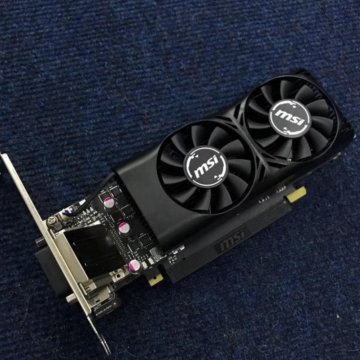 2GHz 16GB 512GB SSD Radeon 580) for $2,804.00 * ($95 off + no tax outside NY & NJ)
2GHz 16GB 512GB SSD Radeon 580) for $2,804.00 * ($95 off + no tax outside NY & NJ)
27″ (4.2GHz 16GB 1TB SSD Radeon 580) for $3,204.00 * ($95 off + no tax outside NY & NJ)
27″ (4.2GHz 16GB 2TB SSD Radeon 580) for $4,004.00 * ($95 off + no tax outside NY & NJ)
27″ (4.2GHz 32GB 2TB FUS Radeon 580) for $3,004.00 * ($95 off + no tax outside NY & NJ)
27″ (4.2GHz 32GB 3TB FUS Radeon 580) for $3,104.00 * ($95 off + no tax outside NY & NJ)
27″ (4.2GHz 32GB 512GB SSD Radeon 580) for $3,204.00 * ($95 off + no tax outside NY & NJ)
27″ (4.2GHz 32GB 1TB SSD Radeon 580) for $3,604.00 * ($95 off + no tax outside NY & NJ)
27″ (4.2GHz 32GB 2TB SSD Radeon 580) for $4,404.00 * ($95 off + no tax outside NY & NJ)
27″ (4.2GHz 64GB 2TB FUS Radeon 580) for $3,804.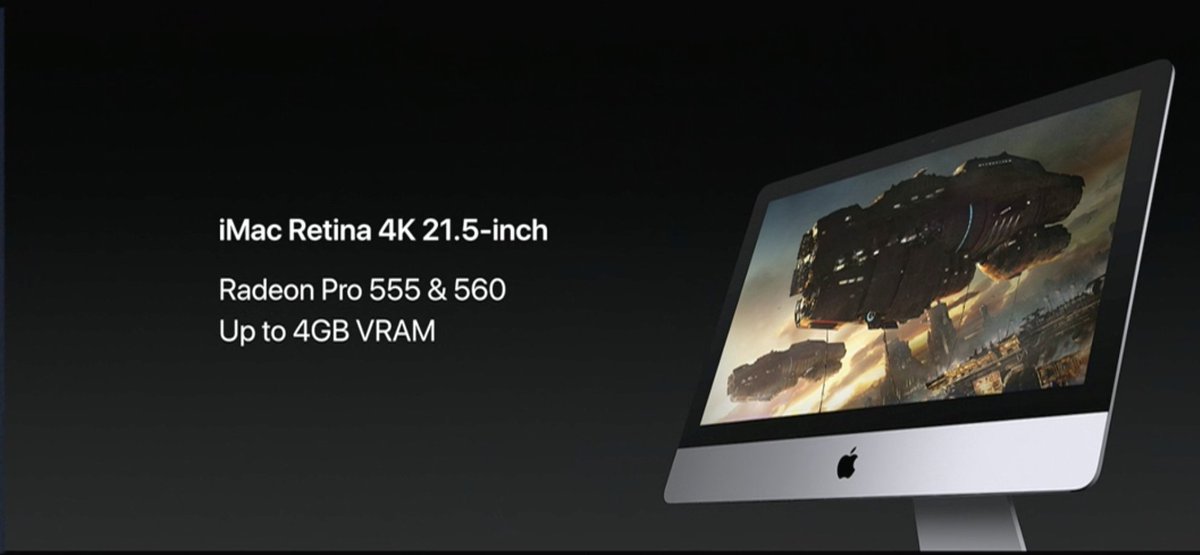 00 * ($95 off + no tax outside NY & NJ)
00 * ($95 off + no tax outside NY & NJ)
27″ (4.2GHz 64GB 3TB FUS Radeon 580) for $3,904.00 * ($95 off + no tax outside NY & NJ)
27″ (4.2GHz 64GB 512GB SSD Radeon 580) for $4,004.00 * ($95 off + no tax outside NY & NJ)
27″ (4.2GHz 64GB 1TB SSD Radeon 580) for $4,404.00 * ($95 off + no tax outside NY & NJ)
27″ (4.2GHz 64GB 2TB SSD Radeon 580) for $5,204.00 * ($95 off + no tax outside NY & NJ)
* Price with coupon code APINSIDER. Prices in red reflect total savings off MSRP. Adorama will not collect sales tax on orders shipped outside NY & NJ.
(%) Step by Step Instructions for these Deals at Adorama
- 1) Make sure you’re using a browser with cookies enabled that isn’t in private mode.
2) Click on the price link to the desired configuration from this article or the Adorama price links in our Price Guides.
 You MUST click through our links in the same shopping session that you use our coupon. If you try to save a link for late, the coupon WON’T WORK. Once you click through a price link, you’ll see a price that’s higher than advertised (we’ll fix that in a moment).
You MUST click through our links in the same shopping session that you use our coupon. If you try to save a link for late, the coupon WON’T WORK. Once you click through a price link, you’ll see a price that’s higher than advertised (we’ll fix that in a moment).
3) Add the MacBook to your cart anyway, and when you’re done shopping, begin the checkout process.
4) After you enter your shipping information, move to the Payment section during checkout.
5) Look for a link that says «Do you have a gift card or promo code?» next to the gift icon. Click that to bring up a coupon code field.
6) Enter the coupon code APINSIDER in the field and click apply. The discount should appear under «Promo Savings» above the order total.
7) That’s it. If you live outside NY & NJ Adorama will also not collect sales tax on your order.
As always, if you have any issues, you can reach out to us at [email protected] and we’ll try and help.

Apple iMac 27-Inch 2017 (Customized) with Retina 5K Display (7th Gen Intel Core i7 4.5GHz 8GB RAM 1TB Fusion Drive 4GB Radeon Pro 575 English KB with FaceTime)
4% OFF
Apple iMac 8th Gen 21.5″ IPS Retina 4K Display PC, 4096 x 2304 Pixels, Intel Core i5 3.0 GHz, 8GB DDR4 RAM, 256GB SSD, AMD Radeon Pro 560X 4GB GDDR5, MacOS, Eng Keyboard, Silver | MHK33LL/A
Fulfilled by Microless
AED 5,255.25
AED 5,460.00
Apple 21.5″ iMac — 8th Gen 6-Core, Intel Core i5 3.0 GHz, 8GB DDR4 RAM, 256GB SSD, 21.5″ 4096 x 2304 IPS Retina 4K Display, AMD Radeon Pro 560X (4GB GDDR5) MacOS (64-Bit) — ARB KB | MHK33AE/A
Fulfilled by Microless
AED 6,520.50
AED 6,520.50
Apple iMac 27» Retina 5K Display Computer, 3.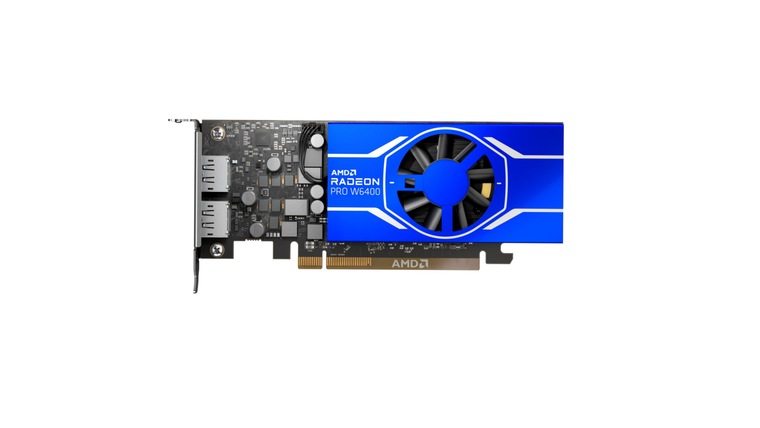 8Ghz 8-Core, 10th Gen. Intel Core i7, 8GB Ram, 512GB SSD, Radeon Pro 5500 XT 8GB Memory, English Keyboard, Silver | MXWV2B/A / MXWV2
8Ghz 8-Core, 10th Gen. Intel Core i7, 8GB Ram, 512GB SSD, Radeon Pro 5500 XT 8GB Memory, English Keyboard, Silver | MXWV2B/A / MXWV2
Fulfilled by Microless
AED 9,354.45
AED 9,354.45
3% OFF
Apple Mac Pro, 3.3GHz 12 Core Intel Xeon W 4.4GHz, 96GB DDR4 RAM, 4TB SSD, Radeon Pro W5500X 8GB GDDR6, Stainless Steel Frame With Feet, Magic Mouse, Magic KB Numeric Keypad — Arabic | Z0W300E0G
Fulfilled by Microless
AED 38,850.00
AED 39,900.00
Used — OptiPlex 9010 24» All In One PC, 3rd Generation Intel Core i5 Processor, 4GB RAM, 250GB HDD, 1920×1080 Resolution, Black | OptiPlex 9010
AED 990.00
AED 990.00
9% OFF
Refurbished — Dell OptiPlex Desktop Computer, Intel Core i5, 3rd Generation, 8GB RAM , 500GB HDD, 20” LED Monitor , Wired Keyboard And Mouse | 5GNNF2A
AED 999. 00
00
AED 1,100.00
Lenovo V130-20IGM 19.5″ Non-Touch AIO PC, Intel Pentium Silver J5040 Processor, 4GB DDR4 RAM, 1TB HDD, Integrated Graphic Card, DOS — Black | 10RX0035UM
Fulfilled by Microless
AED 1,333.50
AED 1,333.50
3% OFF
Lenovo AIO V30A, i3-10110U, 4GB DDR4, 1TB HDD, Integrated Graphics, 21.5″ Non-Touch, Dos, English Key Board, 1 Year Warranty — Black | 11FV000JUM
Fulfilled by Microless
AED 1,885.80
AED 1,953.00
Lenovo V30a-22IIL 21.5″ FHD Non Touch AIO PC, 10th Gen Intel Core i3-1005G1, 4GB RAM, 1TB HDD, Intel UHD Graphics, Webcam, With Keyboard / Mouse, DOS — No OS, Black | 11LC0039UM
Fulfilled by Microless
AED 1,890.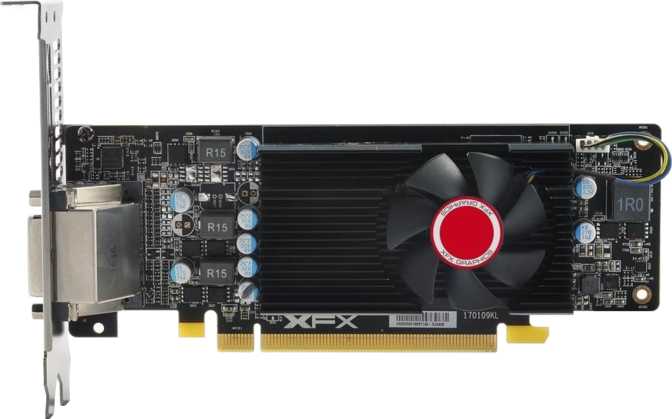 00
00
AED 1,890.00
MSI Pro 16T 10M 15.6» HD Touch All In One PC, 1366×768 Resolution, Anti Glare, Intel Celeron 5205U Dual Core Processor, 4GB RAM, 128GB SSD, Windows 11 Pro, Black | 9S6-A61811-047
Fulfilled by Microless
AED 1,970.85
AED 1,970.85
HP ProOne 200 G4 AIO Non-Touch i3-10110U, 4GB DDR4, 1TB Sata HDD, 21.5 LED Intel UHD Graphics 620 5MP WebCam, DVDRW, DOS — Iron Gray | 9UG59EA
Fulfilled by Microless
AED 1,995.00
AED 1,999.20
Acer Aspire C22-963 AIO, All-in-One Desktop, Intel Core i3 1005G1, 1.2GHz, 4GB Ram, 1TB HDD, Windows 10, 21.5 inch FHD, 1 Year Warranty — Black | DQ.BENEM.002
Fulfilled by Microless
AED 2,052. 75
75
AED 2,052.75
Lenovo AIO V330 Intel Core i5-9400, 4GB Ram, 1TB HDD, 19.5», Dos — Black | 10UK00FDUM
Fulfilled by Microless
AED 2,130.03
AED 2,130.03
MSI Pro AP241 11M 23.8″ FHD All In One PC, Intel Pentium G6405 CPU, 4GB RAM, 128GB SSD, Windows 11 Pro, LED Backlight, 1920×1080 Resolution, Black | 9S6-AE0311-411
Fulfilled by Microless
AED 2,154.60
AED 2,154.60
Acer Aspire C22-865 AIO, All-in-One Desktop, Intel Core i3 8130U, 2.2GHz, 4GB Ram, 1TB HDD, Windows 10, 21.5 inch FHD, 1 Year Warranty — Black | DQ.BBREM.011
Fulfilled by Microless
AED 2,173.50
AED 2,173.50
HP 205 G4 22 21. 5″ FHD All-in-One PC, AMD Ryzen 5 3500U Processor, 4GB RAM, 1TB 7200 Rpm Sata HDD, AMD Radeon Vega 8 Graphics, DOS, English Keyboard, Grey | 205 G4 22
5″ FHD All-in-One PC, AMD Ryzen 5 3500U Processor, 4GB RAM, 1TB 7200 Rpm Sata HDD, AMD Radeon Vega 8 Graphics, DOS, English Keyboard, Grey | 205 G4 22
Fulfilled by Microless
AED 2,196.60
AED 2,196.60
HP 21B-0038NH AIO 20.7″ Non Touchscreen PC, 1920 x 1080 Resolution, 10th Gen Intel Core i3-1005G1, UHD Graphics, 4GB RAM, 1TB SATA HDD, Webcam, DOS, White | 21B-0038NH
Fulfilled by Microless
AED 2,205.00
AED 2,205.00
Asus Vivo AiO V222FAK, 21.5″FHD (1920 x 1080), i3-10110U, 4GB DDR4 RAM, 1TB SATA 5400RPM 2.5″ HDD, Intel® Iris Xe Graphics, WIN 10 Home, ZEN WL Keyboard+Mouse White | V222FAK-WA133T
Fulfilled by Microless
AED 2,205.00
AED 2,205.00
MSI Modern AM241 11M 23. 8» FHD All In One PC, Intel Pentium Gold 7505 Quad Core CPU, 4GB RAM, 128GB SSD, Intel Iris Xe Graphics, Windows 11 Pro, Black | 9S6-AE0111-828
8» FHD All In One PC, Intel Pentium Gold 7505 Quad Core CPU, 4GB RAM, 128GB SSD, Intel Iris Xe Graphics, Windows 11 Pro, Black | 9S6-AE0111-828
Fulfilled by Microless
AED 2,291.10
AED 2,291.10
Lenovo V30a-22IML 21.5» AIO PC, 1920×1080 Resolution, 10th Gen Intel Core i3-10110 Processor, 4GB RAM, 1TB HDD, Windows 10 Pro, Wired Mouse/ Keyboard, Black | 11FV0003AX
Fulfilled by Microless
AED 2,294.25
AED 2,294.25
MSI Pro DP21 11M Ultra Small Form Factor PC, Intel Core i3-10105 Processor, H510 Chipset, 8GB RAM, 1TB HDD, Intel UHD Graphics, Windows 11, Black | 9S6-B0A411-097
Fulfilled by Microless
AED 2,302.65
AED 2,302.65
Radeon Pro 575 [in 2 benchmarks]
Radeon Pro 575
- PCIe 3.
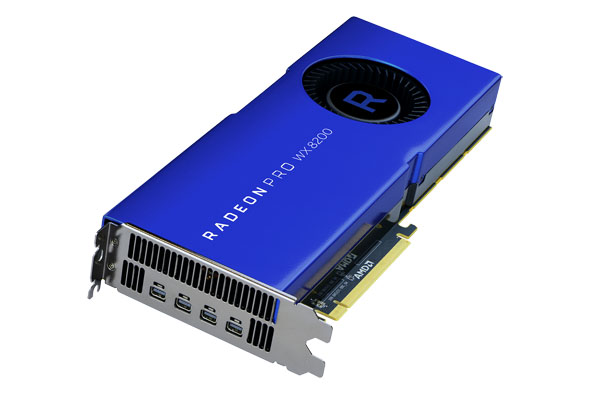 0 x16 interface
0 x16 interface - Core frequency 1096 MHz
- Video memory size 4 GB
- Memory type GDDR5
- Memory frequency 6780 MHz
- Maximum resolution
Description
AMD started Radeon Pro 575 sales 5 June 2017. This is GCN 4.0 architecture desktop card based on 14 nm manufacturing process and primarily aimed at designers. It has 4 GB of GDDR5 memory at 6.78 GHz, and coupled with a 256-bit interface, this creates a bandwidth of 217.0 GB / s.
In terms of compatibility, this is an integrated graphics card. The length of the reference version is 241 mm. An additional power cable is not required for connection, and the power consumption is 120 W.
We don’t have test results for the Radeon Pro 575.
General Information
Information about the type (desktop or laptop) and architecture of the Radeon Pro 575, as well as when sales started and cost at the time.
| Price now | 448 $ | (A100 SXM4) |
Radeon Pro 575’s general performance parameters such as number of shaders, GPU core clock, manufacturing process, texturing and calculation speed.
 They indirectly speak about Radeon Pro 575’s performance, but for precise assessment you have to consider its benchmark and gaming test results.
They indirectly speak about Radeon Pro 575’s performance, but for precise assessment you have to consider its benchmark and gaming test results.
Compatibility and dimensions
Information on Radeon Pro 575 compatibility with other computer components. Useful for example when choosing the configuration of a future computer or to upgrade an existing one. For desktop video cards, these are the interface and connection bus (compatibility with the motherboard), the physical dimensions of the video card (compatibility with the motherboard and case), additional power connectors (compatibility with the power supply).
| Baby memory capacity | 217.0 GB/s | of 14400 (Radeon R7 M260) |
of the video release
21
Types and number of video connectors present on Radeon Pro 575. As a rule, this section is relevant only for desktop reference video cards, since for notebook ones the availability of certain video outputs depends on the laptop model.
| Video connectors | 2.0 | |
| VULKAN | 1.2.131 |
Tests in benchmark
These are the results of the Radeon Pro 575 rendering performance tests in non-gaming benchmarks. The overall score is set from 0 to 100, where 100 corresponds to the fastest video card at the moment.
- GeekBench 5 OpenCL
- GeekBench 5 Vulcan
GeekBench 5 OpenCL
Geekbench 5 is a widely used benchmark for graphics cards that combines 11 different test scenarios. All of these scenarios are based on the direct use of the processing power of the GPU, without the use of 3D rendering. This option uses the Khronos Group’s OpenCL API.
Benchmark coverage: 9%
Pro 575
35081
GeekBench 5 Vulkan
Geekbench 5 is a widely used benchmark for graphics cards that combines 11 different test scenarios. All of these scenarios are based on the direct use of the processing power of the GPU, without the use of 3D rendering. This option uses the Vulkan API from AMD and the Khronos Group.
All of these scenarios are based on the direct use of the processing power of the GPU, without the use of 3D rendering. This option uses the Vulkan API from AMD and the Khronos Group.
Benchmark coverage: 5%
Pro 575
31842
Competitor from NVIDIA
We believe that Quadro M5000 is the nearest equivalent to Radeon Pro 575 from NVIDIA.
Quadro
M5000
Compare
Other video cards
Here we recommend several video cards that are more or less similar in performance to the reviewed one.
Quadro
M5000
Compare
Radeon Pro
570
Compare
Radeon Pro
580X
Compare
Radeon Pro
580
Compare
Recommended Processors
According to our statistics, these processors are most often used with the Radeon Pro 575.
Core i5
7600
33.3%
Core i5
1135G7
13.3%
Core i5
10300H
6.7%
Core i5
9300H
6.7%
Core i5
1035G1
6.7%
Core i5
3470
6.7%
Core i5
7300U
6.7%
Core i7
4720HQ
6.7%
Core i5
4690
6.7%
Core i7
7700K
6. 7%
7%
User rating
Here you can see the rating of the video card by users, as well as put your own rating.
Tips and comments
Here you can ask a question about the Radeon Pro 575, agree or disagree with our judgements, or report an error or mismatch.
Please enable JavaScript to view the comments powered by Disqus.
performance overview and gaming performance tests
The Radeon Pro 575 graphics card was released by AMD, release date: 5 June 2017. The graphics card is designed for workstation computers and is based on the GCN 4.0 architecture, codenamed Polaris 20.
Core clock — 1096 MHz. Texturing speed — 140.8 GTexel / s. Number of shader processors — 2048. Floating point performance — 4,506 gflops. Technological process — 14 nm. The number of transistors is 5,700 million. Power consumption (TDP) — 120 Watt.
Memory type: GDDR5. The maximum memory size is 4 GB. Memory bus width — 256 Bit. Memory frequency — 6800 MHz. The memory bandwidth is 217.6 GB / s.
Memory frequency — 6800 MHz. The memory bandwidth is 217.6 GB / s.
Benchmarks
| Geekbench OpenCL |
|
|
||||
| CompuBench 1.5 Desktop Face Detection |
|
|
||||
CompuBench 1. 5 Desktop 5 Desktop Ocean Surface Simulation |
|
|
||||
| CompuBench 1.5 Desktop T-Rex |
|
|
||||
| CompuBench 1.5 Desktop Video Composition |
|
|
||||
| CompuBench 1.5 Desktop Bitcoin Mining |
|
|
||||
| GFXBench 4.0 Car Chase Offscreen |
|
|
||||
GFXBench 4.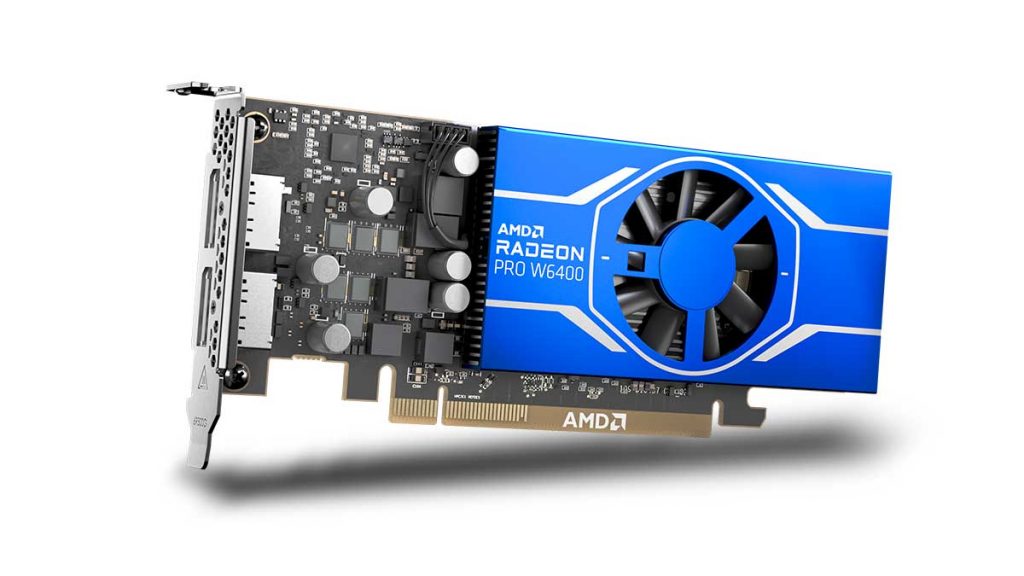 0 0 Manhattan |
|
|
||||
| GFXBench 4.0 T-Rex |
|
|
||||
| GFXBench 4.0 Car Chase Offscreen |
|
|
||||
| GFXBench 4.0 Manhattan |
|
|
||||
| GFXBench 4.0 T-Rex |
|
|
| Name | Meaning |
|---|---|
| Geekbench — OpenCL | 35081 |
| CompuBench 1.5 Desktop — Face Detection | 86.154 mPixels/s |
| CompuBench 1.5 Desktop — Ocean Surface Simulation | 1090.128 Frames/s |
| CompuBench 1.5 Desktop — T-Rex | 7.880 Frames/s |
| CompuBench 1.5 Desktop — Video Composition | 98.349 Frames/s |
| CompuBench 1.5 Desktop — Bitcoin Mining | 539.686 mHash/s |
GFXBench 4.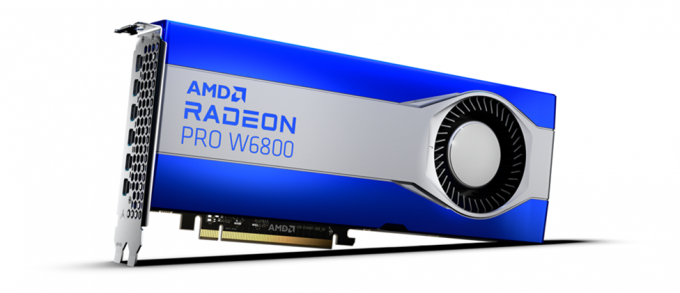 0 — Car Chase Offscreen 0 — Car Chase Offscreen |
9613 Frames |
| GFXBench 4.0 — Manhattan | 2814 Frames |
| GFXBench 4.0 — T-Rex | 3352 Frames |
| GFXBench 4.0 — Car Chase Offscreen | 9613.000 Fps |
| GFXBench 4.0 — Manhattan | 2814.000 Fps |
| GFXBench 4.0 — T-Rex | 3352.000 Fps |
Features
| Architecture | GCN 4.0 |
| Codename | Polaris 20 |
| Production date | June 5, 2017 |
| Place in the ranking | 361 |
| Type | Workstation |
| Core frequency | 1096MHz |
| Floating point performance | 4. 506 gflops 506 gflops |
| Process | 14 nm |
| Number of shaders | 2048 |
| Texturing speed | 140.8 GTexel/s |
| Power consumption (TDP) | 120 Watt |
| Number of transistors | 5,700 million |
| Video connectors | No outputs |
| Interface | PCIe 3.0 x16 |
| Length | 241 mm |
| Additional power connectors | None |
| DirectX | 12. 0 (12_0) 0 (12_0) |
| OpenGL | 4.5 |
| Maximum memory size | 4GB |
| Memory bandwidth | 217.6 GB/s |
| Memory bus width | 256 Bit |
| Memory frequency | 6800MHz |
| Memory type | GDDR5 |
Navigation
Select graphics card
Comparison of video cards
Comparison of AMD Radeon Pro 575 with other video cards
AMD
Radeon Pro 575
versus
ATI
FireGL V3350
AMD
Radeon Pro 575
versus
NVIDIA
GeForce 9650M GS
AMD
Radeon Pro 575
versus
NVIDIA
Quadro FX 4700 X2
AMD
Radeon Pro 575
versus
NVIDIA
Quadro FX 370M
AMD
Radeon Pro 575
versus
AMD
Radeon HD 7950 Mac Edition
AMD
Radeon Pro 575
versus
AMD
Radeon R9 270
Radeon Pro 575 Overview.
 Benchmarks and specs
Benchmarks and specs
The Radeon Pro 575 graphics card (GPU) is ranked 0 in our performance rankings. Manufacturer: RADEON. The Radeon Pro 575 runs at a minimum clock speed of 1096 MHz. The graphics chip is equipped with an acceleration system and can operate in turbo mode or during overclocking. The RAM size is 4 GB GB with a clock speed of 6780 MHz and a bandwidth of 217.0 GB/s.
The power consumption of the Radeon Pro 575 is , and the process technology is only 14 nm. Below you will find key compatibility, sizing, technology, and gaming performance test results. You can also leave comments if you have any questions.
Let’s take a closer look at the most important characteristics of the Radeon Pro 575. To get an idea of which video card is better, we recommend using the comparison service.
4.6
From 12
Hitesti Grade
Popular video cards
Most viewed
AMD Radeon RX Vega 7
Intel UHD Graphics 630
Intel UHD Graphics 600
NVIDIA Quadro T1000
AMD Radeon RX Vega 10
NVIDIA GeForce MX330
Intel HD Graphics 530
Intel UHD Graphics 620
Intel HD Graphics 4600
Intel HD Graphics 520
Buy here:
AliExpress
General information
The base set of information will help you to know the release date of the Radeon Pro 575 graphics card and its intended use (laptops or PCs), as well as the price at the time of release and the average current cost.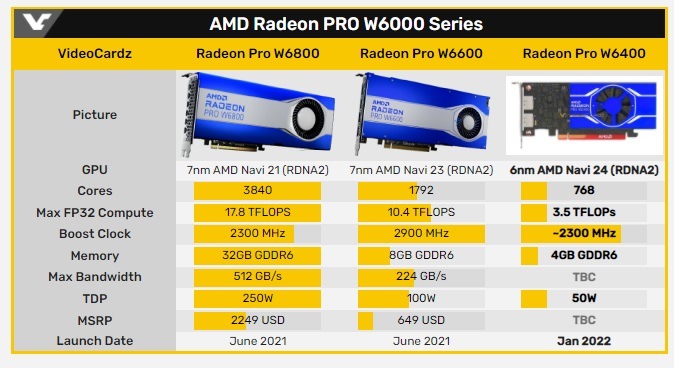 This data also includes the architecture used by the manufacturer and the video processor code name.
This data also includes the architecture used by the manufacturer and the video processor code name.
| Performance Rating Position: | not rated | |||
| Architecture: | GCN 4.0 | |||
| Release date: | 5 June 2017 (4 years ago) | |||
| Current price: | $448 | |||
| GPU code name: | Polaris 20 | |||
| Market segment: | Workstation | |||
Specifications
This is important information that determines all the power characteristics of the Radeon Pro 575 video card. The smaller the chip manufacturing process, the better (in modern realities). The clock frequency of the core is responsible for its speed (direct correlation), while signal processing is carried out by transistors (the more transistors, the faster the calculations are performed, for example, in cryptocurrency mining).
| Core Clock: | 1096 MHz | |||
| Process: | 14nm | |||
| Number of texels processed in 1 second: | 140.3 | |||
| Floating point: | 4.506 gflops | |||
| Pipelines / CUDA cores: | 2048 | |||
| Number of transistors: | 5,700 million | |||
| Estimated heat output: | 120 Watt | |||
Dimensions, Connectors and Compatibility
There are so many PC case and laptop form factors available today that it’s important to know the length of your graphics card and how it’s connected (except for laptop versions). This will help make the upgrade process easier, as Not all cases can accommodate modern video cards.
| Interface: | PCIe 3. 0 x16 0 x16 |
|||
| Length: | 241 mm | |||
| Additional power: | None | |||
Memory (Frequency and Overclocking)
Internal memory is used to store data when performing calculations. Modern games and professional graphics applications place high demands on the amount and speed of memory. The higher this parameter, the more powerful and faster the video card. Memory type, size and bandwidth for Radeon Pro 575 + turbo overclocking capability.
| Memory type: | GDDR5 | |||
| Maximum RAM amount: | 4GB | |||
| Memory bus width: | 256 Bit | |||
| Memory frequency: | 6780 MHz | |||
| Memory bandwidth: | 217.0 GB/s | |||
Support for ports and displays
As a rule, all modern video cards have several types of connections and additional ports, for example HDMI and DVI .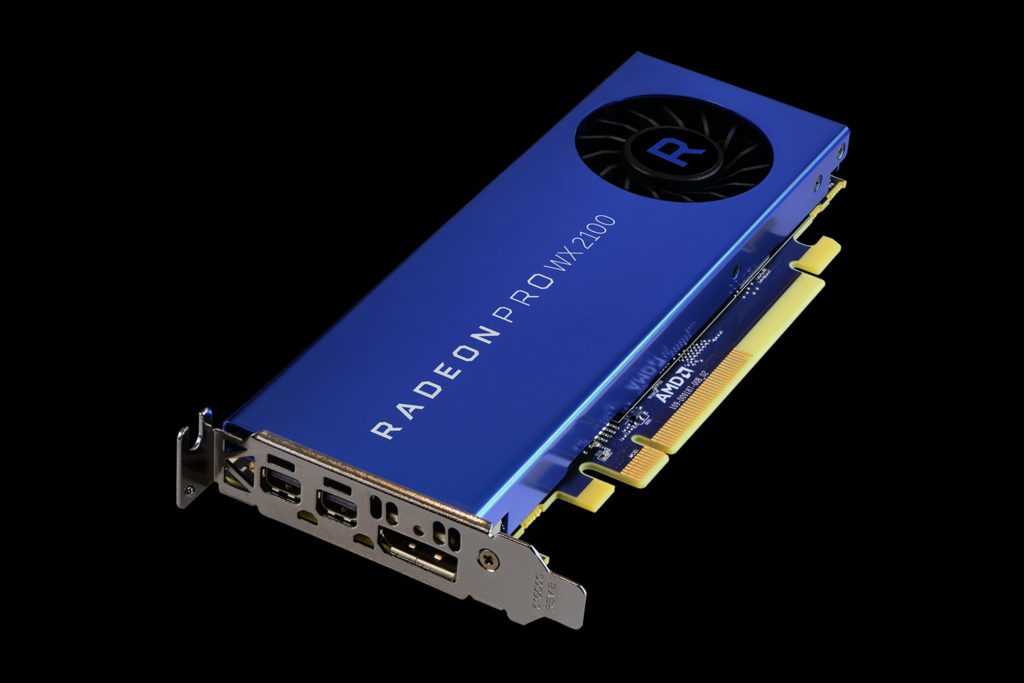 Knowing these features is very important in order to avoid problems connecting a video card to a monitor or other peripherals.
Knowing these features is very important in order to avoid problems connecting a video card to a monitor or other peripherals.
| Display connections: | No outputs | |||
API support
All APIs supported by the Radeon Pro 575 graphics card are listed below. This is a minor factor that does not greatly affect the overall performance.
| DirectX: | 12 (12_0) | |||
| OpenGL: | 4.6 | |||
| Vulkan: | 1.2.131 | |||
| Shader Model: | 6.4 | |||
| OpenCL: | 2.0 | |||
Overall gaming performance
All tests are based on FPS. Let’s take a look at how the Radeon Pro 575 ranked in the gaming performance test (calculated according to the game developer’s recommendations for system requirements; it may differ from actual situations).
Select games
Horizon Zero DawnDeath StrandingF1 2020Gears TacticsDoom EternalHunt ShowdownEscape from TarkovHearthstoneRed Dead Redemption 2Star Wars Jedi Fallen OrderNeed for Speed HeatCall of Duty Modern Warfare 2019GRID 2019Ghost Recon BreakpointFIFA 20Borderlands 3ControlF1 2019League of LegendsTotal War: Three KingdomsRage 2Anno 1800The Division 2Dirt Rally 2.0AnthemMetro ExodusFar Cry New DawnApex LegendsJust Cause 4Darksiders IIIFarming Simulator 19Battlefield VFallout 76Hitman 2Call of Duty Black Ops 4Assassin´s Creed OdysseyForza Horizon 4FIFA 19Shadow of the Tomb RaiderStrange BrigadeF1 2018Monster Hunter WorldThe Crew 2Far Cry 5World of Tanks enCoreX-Plane 11.11Kingdom Come: DeliveranceFinal Fantasy XV BenchmarkFortniteStar Wars Battlefront 2Need for Speed PaybackCall of Duty WWIIAssassin´s Creed OriginsWolfenstein II: The New ColossusDestiny 2MEDLE-Evil Within : Shadow of WarFIFA 18Ark Survival EvolvedF1 2017Playerunknown’s Battlegrounds (2017)Team Fortress 2Dirt 4Rocket LeaguePreyMass Effect AndromedaGhost Recon WildlandsFor HonorResident Evil 7Dishonored 2Call of Duty Infinite WarfareTitanfall 2Farming Simulator 17Civilization VIBattlefield 1Mafia 3Deus Ex Mankind DividedMirror’s Edge CatalystOverwatchDoomAshes of the SingularityHitman 2016The DivisionFar Cry PrimalXCOM 2Rise of the Tomb RaiderRainbow Six SiegeAssassin’s Creed SyndicateStar Wars BattlefrontFallout 4Call of Duty: Black Ops 3Anno 2205World of WarshipsDota 2 RebornThe Witcher 3Dirt RallyGTA VDragon Age: InquisitionFar Cry 4Assassin’s Creed Un ityCall of Duty: Advanced WarfareAlien: IsolationMiddle-earth: Shadow of MordorSims 4Wolfenstein: The New OrderThe Elder Scrolls OnlineThiefX-Plane 10.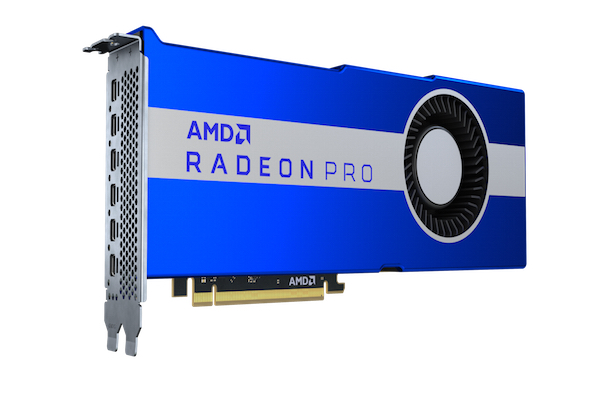 25Battlefield 4Total War: Rome IICompany of Heroes 2Metro: Last LightBioShock InfiniteStarCraft II: Heart of the SwarmSimCityTomb RaiderCrysis 3Hitman: AbsolutionCall of Duty : Black Ops 2World of Tanks v8Borderlands 2Counter-Strike: GODirt ShowdownDiablo IIIMass Effect 3The Elder Scrolls V: SkyrimBattlefield 3Deus Ex Human RevolutionStarCraft 2Metro 2033Stalker: Call of PripyatGTA IV — Grand Theft AutoLeft 4 DeadTrackmania Nations ForeverCall of Duty 4 — Modern WarfareSupreme Commander — FA BenchCrysis — GPU BenchmarkWorld in Conflict — BenchmarkHalf Life 2 — Lost Coast BenchmarkWorld of WarcraftDoom 3Quake 3 Arena — TimedemoHalo InfiniteFarming Simulator 22Battlefield 2042Forza Horizon 5Riders RepublicGuardians of the GalaxyBack 4 BloodDeathloopF1 2021Days GoneResident Evil VillageHitman 3Cyberpunk 2077Assassin´s Creed ch Dogs LegionMafia Definitive EditionCyberpunk 2077 1.5GRID LegendsDying Light 2Rainbow Six ExtractionGod of War
25Battlefield 4Total War: Rome IICompany of Heroes 2Metro: Last LightBioShock InfiniteStarCraft II: Heart of the SwarmSimCityTomb RaiderCrysis 3Hitman: AbsolutionCall of Duty : Black Ops 2World of Tanks v8Borderlands 2Counter-Strike: GODirt ShowdownDiablo IIIMass Effect 3The Elder Scrolls V: SkyrimBattlefield 3Deus Ex Human RevolutionStarCraft 2Metro 2033Stalker: Call of PripyatGTA IV — Grand Theft AutoLeft 4 DeadTrackmania Nations ForeverCall of Duty 4 — Modern WarfareSupreme Commander — FA BenchCrysis — GPU BenchmarkWorld in Conflict — BenchmarkHalf Life 2 — Lost Coast BenchmarkWorld of WarcraftDoom 3Quake 3 Arena — TimedemoHalo InfiniteFarming Simulator 22Battlefield 2042Forza Horizon 5Riders RepublicGuardians of the GalaxyBack 4 BloodDeathloopF1 2021Days GoneResident Evil VillageHitman 3Cyberpunk 2077Assassin´s Creed ch Dogs LegionMafia Definitive EditionCyberpunk 2077 1.5GRID LegendsDying Light 2Rainbow Six ExtractionGod of War
low
1280×720
med.
1920×1080
high
1920×1080
ultra
1920×1080
QHD
2560×1440
4K
3840×2160
Horizon Zero Dawn (2020)
low
1280×720
med.
1920×1080
high
1920×1080
ultra
1920×1080
QHD
2560×1440
4K
3840×2160
Death Stranding (2020)
low
1280×720
med.
1920×1080
high
1920×1080
ultra
1920×1080
QHD
2560×1440
4K
3840×2160
F1 2020 (2020)
low
1280×720
med.
1920×1080
high
1920×1080
ultra
1920×1080
QHD
2560×1440
4K
3840×2160
Gears Tactics (2020)
low
1280×720
med.
1920×1080
high
1920×1080
ultra
1920×1080
QHD
2560×1440
4K
3840×2160
Doom Eternal (2020)
low
1280×720
med.
1920×1080
high
1920×1080
ultra
1920×1080
QHD
2560×1440
4K
3840×2160
| Description | |
| 5 | Stutter — The performance of this video card with this game has not yet been studied enough. |
| May Stutter — The performance of this video card with this game has not yet been studied enough. Based on interpolated information from graphics cards of a similar performance level, the game is likely to stutter and display low frame rates. | |
| 30 | Fluent — According to all known benchmarks with the specified graphic settings, this game is expected to run at 25 fps or more |
| 40 | Fluent — According to all known benchmarks with the specified graphics settings, this game is expected to run at 35fps or more |
| 60 | Fluent — According to all known benchmarks with the specified graphics settings, this game is expected to run at 58 fps or more |
| May Run Fluently — The performance of this video card with this game has not yet been studied enough. |
|
| ? | Uncertain — testing this video card in this game showed unexpected results. A slower card could provide higher and more consistent frame rates while running the same reference scene. |
| Uncertain — The performance of this video card in this game has not yet been studied enough. It is not possible to reliably interpolate data based on the performance of similar cards in the same category. | |
| The value in the fields reflects the average frame rate across the entire database. To get individual results, hover over a value. | |
Radeon Pro 575 in benchmark results
Benchmarks help determine the performance in standard Radeon Pro 575 benchmarks. We’ve compiled a list of the world’s best-known benchmarks so you can get accurate results for each one (see description).

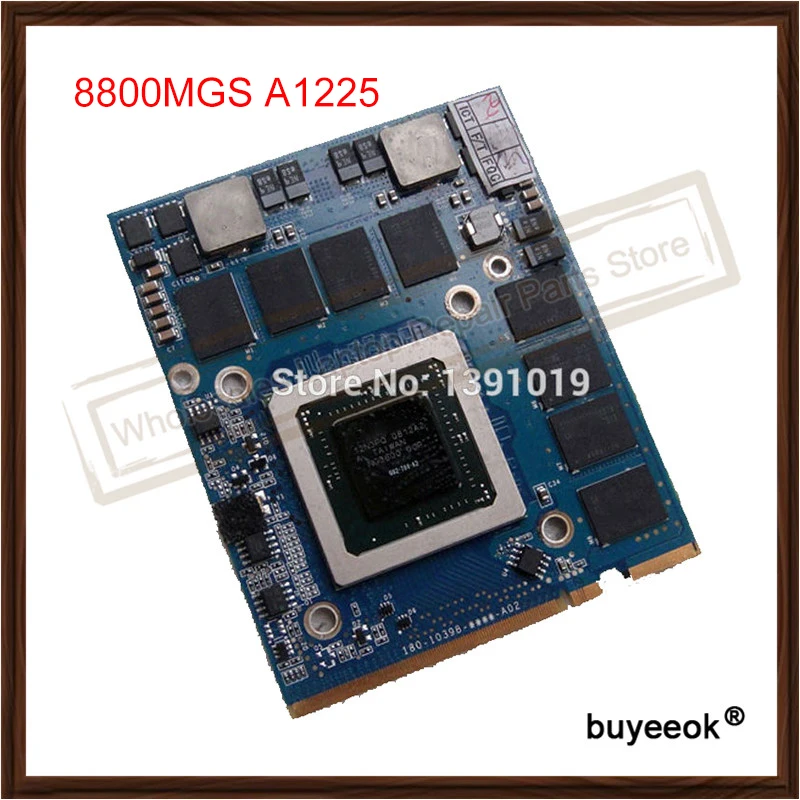 154 mPixels/s
154 mPixels/s 000 Fps
000 Fps 154
154 037 Frames/s
037 Frames/s  000 Fps
000 Fps  000 Fps
000 Fps